The Last of Us
A Naughty Dog Double Feature
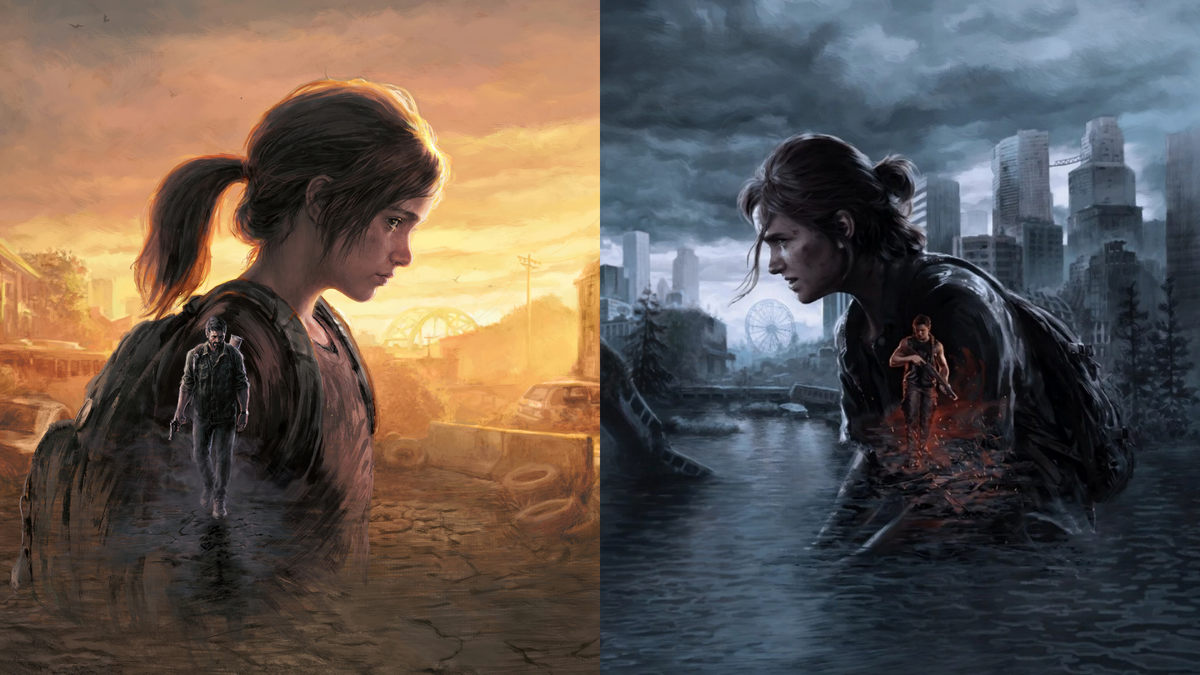
Background
As a primarily PC gamer for the past decade, I’ve been interested in but not able to play the PS3 classic, The Last of Us. Back in 2023, the remake, The Last of Us Part 1 was released on PC but turned out to be an all-time bad port job. The HBO series released around the same time and my hopes of playing the game before watching the series were dashed. I bit the bullet, accepted that the game would be spoiled, and watched the series. It was pretty good and that was that; I didn't think about The Last of Us for a while.
Fast forward two years and I saw that the HBO series was continuing on with a season 2 based on Part 2 and that very Part 2 was coming to PC. This piqued my interest in the series all over again, and I looked into the condition of Part 1's port It looked like all the early issues had been cleaned up with patches, so I decided to get Part 1 on sale and based on how I got along with it would consider picking up Part 2 before season 2 came out.
So, let's get into it. What is it like playing this remade PS3 classic on PC in 2025? And how does Part 2 compare to its predecessor? Let's find out.
SPOILERS AHEAD
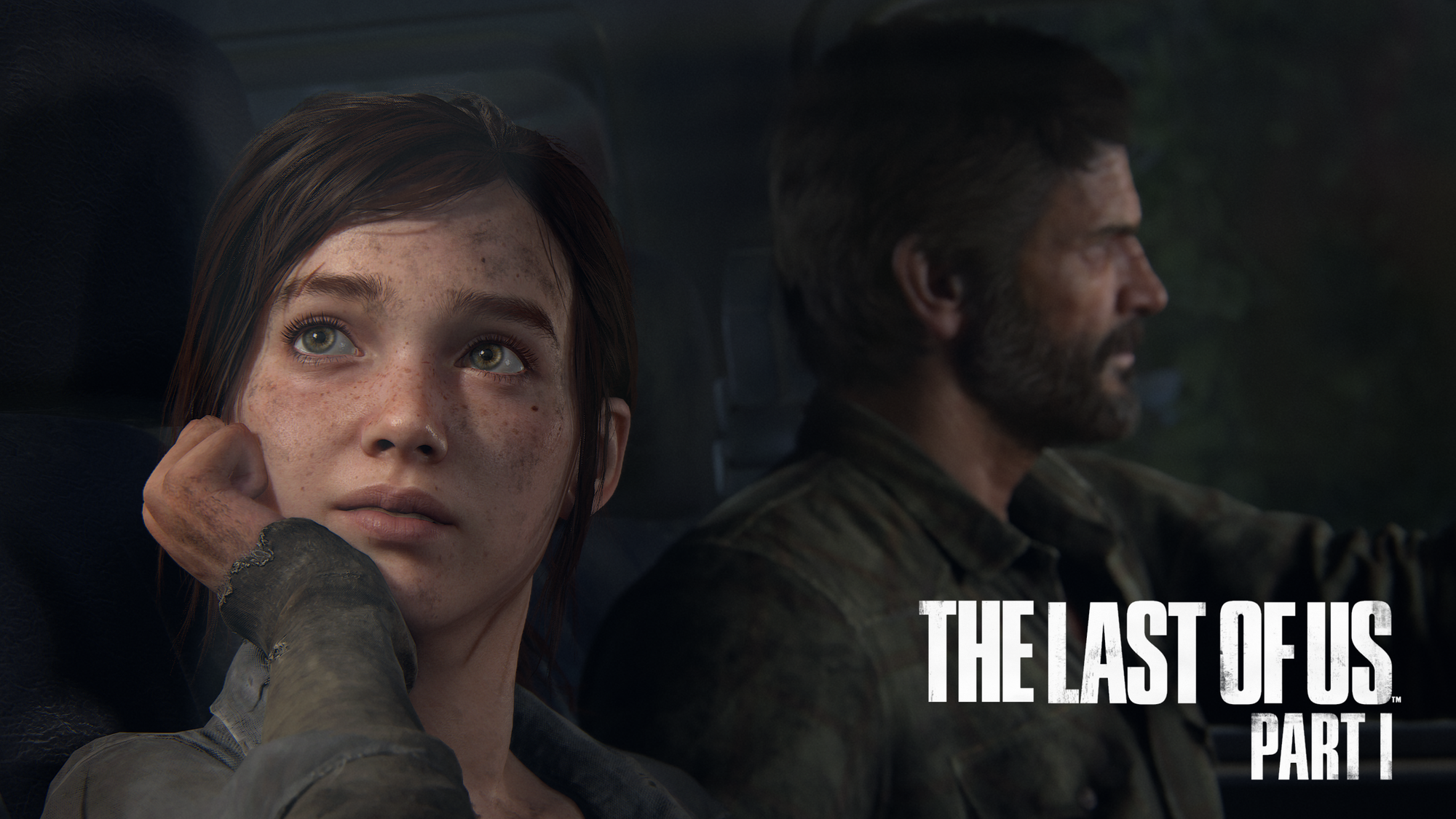
Game Information
Game Name: The Last of Us Part I
Platform(s): PC, PlayStation 5
Developer(s): Naughty Dog LLC, Iron Galaxy Studios
Publisher(s): PlayStation Publishing LLC
Genres: Post-apocalyptic, Action, Stealth, Story-based
First Release Date: Sept 1, 2022
Last Update Date: Jan 24, 2025
Description: Abandoned cities reclaimed by nature. A population decimated by a modern plague. Survivors are killing each other for food, weapons; whatever they can get their hands on. Joel, a brutal survivor, and Ellie, a brave young teenage girl who is wise beyond her years, must work together if they hope to survive their journey across the US.
Reviewed On
Hardware: S.T.A.L.K.E.R.
(Radeon RX 6950 XT, AMD Ryzen 7 5800X3D, 32 GB RAM)
Platform: Steam
Review Notes
- Played two playthroughs. First on Moderate difficulty and second on Grounded.
Misconceptions
This is the easy one. If I had to sum up my opinion on The Last of Us Part 1 in three words, it would be: simple but effective. And simple in a good way, flipping the script on two misconceptions I had about the game:
The story is cliche
I always thought: why play a story-based game if the story is your generic zombie-apocalypse fare? What I found out actually playing the game was that this father/"daughter", zombie-apocalypse road trip structure was just the big-picture excuse for a bunch of more meaningful character moments that elevate the game above the rest. And before discussing further let me give a quick rundown of the story with some of my high-level thoughts included:
The game is set 20 years past the fall of society due to the Cordyceps fungal plague. A survivor/smuggler named Joel lives in the Boston quarantine zone when he and his partner, Tess, are approached by a rebel group, the Fireflies, to transport a young girl named Ellie out of the QZ. In transit, Tess and Joel learn why Ellie is important, discovering that she is immune to the fungal infection. Upon arriving at the drop-off location, the group finds that the Fireflies are dead. With the QZ military hot on their tails and Tess being bitten by an infected, Joel is compelled to carry out the Fireflies mission of taking Ellie cross country to their Salt Lake City QZ in hopes of developing a cure. Joel reluctantly signs on and that's the setup for the game. Joel and Ellie journeying across a fungal plague-ridden country for a longshot at a cure.
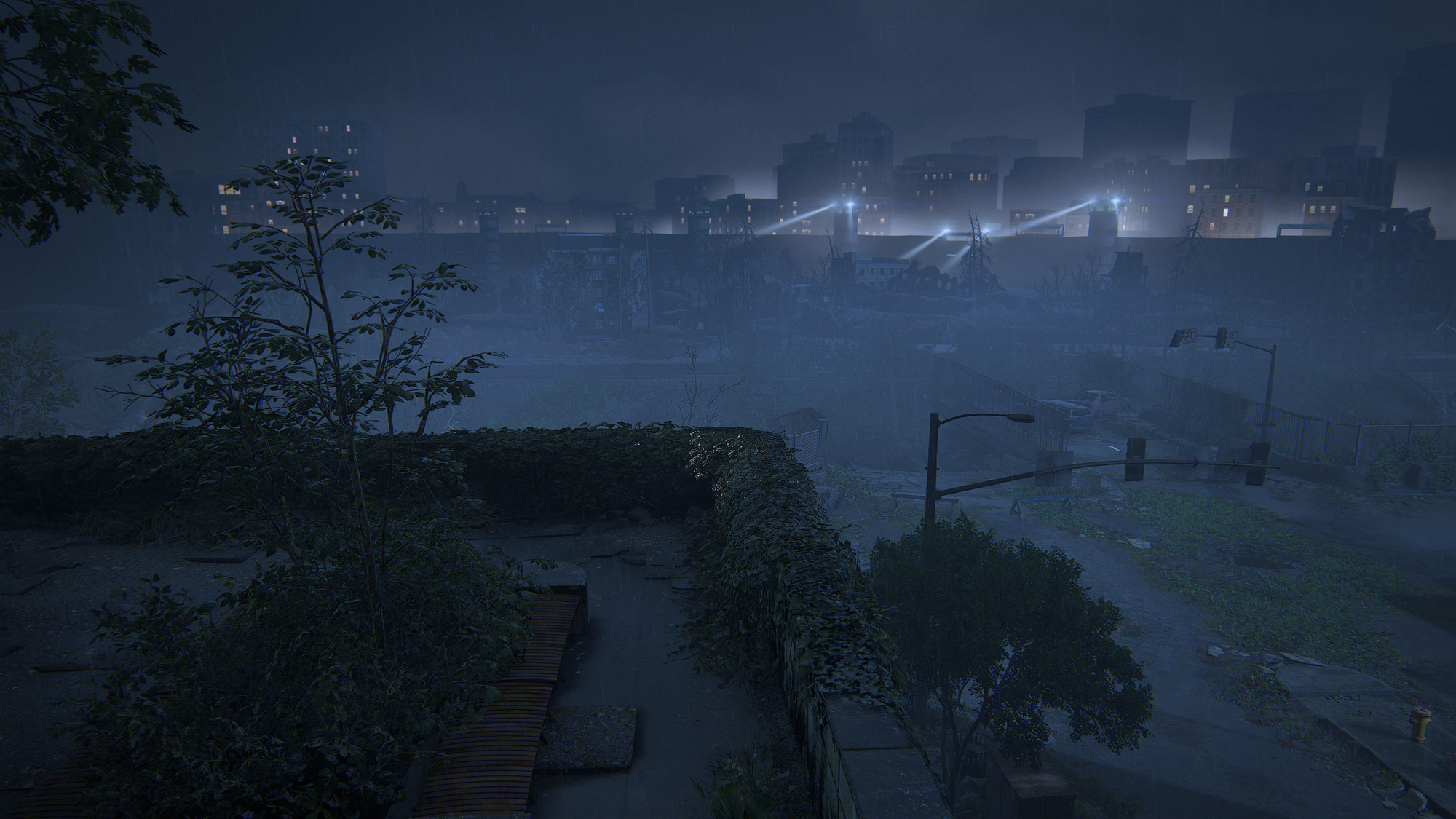
The game lets the player in at a couple noteworthy points in their journey. The points don't change the overall goal necessarily, but more importantly are opportunities for Joel and Ellie's relationship to change and grow. They meet an old survivalist friend of Joel's in a quaint, northeastern town, they get ambushed by an unsavory faction of scavengers in Pittsburgh, they find Joel's brother Tommy out in Wyoming, etc... The overall effect is that Joel goes from cold and standoffish to seeing Ellie as essentially a surrogate daughter. While Ellie goes from being scared and alone with no one to trust to having a true mentor and someone she can count on. These transformations are subtle over the course of the game, with the characters interactions evolving as the spend more time together.
The Last of Us tops things off with an ending that is both nuanced and memorable. Upon arriving in Salt Lake City, Joel and Ellie begin making their way to the hospital. They're concerned by the lack of any Firefly presence but push on regardless. After getting caught in a fast-moving stream where Ellie nearly drowns, they wash ashore and where Joel is immediately greeted with a rifle butt to the skull. Joel wakes up in a hospital room with Marlene, leader of the Boston Fireflies, there to greet him. She explains that Ellie has been taken into surgery and that she will need to die in order to investigate her immunity further. From the Fireflies perspective this is unfortunate but certainly a small sacrifice in order to further the pursuit of a solution to the Cordyceps fungus. From Joel's perspective, he just got knocked out, abducted, Ellie stripped from him, and then told she is going to die. It's rough and the circumstances plus Joel's past don't help either. Salt Lake and the hospital are in a rough condition. The Fireflies seem to have a loose control of the situation. Joel's inherent distrust of their cause plays a role too. He believes he had his brother "stolen" from him by the Fireflies cause. At the end of the day Joel's a cynical old man and decides to rescue Ellie, murdering every Firefly standing in his way, including the surgeon. It's a brutal, conflicting experience to play. Both sides have a valid argument for their positions, making it interesting to ask yourself what you'd do in that position. Joel's actions are violent and perhaps rash, but absolutely in character. The Fireflies seem desperate to pursue their cause but could've handled how they treated Joel and Ellie better.
The nuanced ending extends a bit further into the final scene where Ellie, now conscious and out of the hospital gown, asks Joel what happened back in Salt Lake. Joel lies, telling her that there were others who were immune and that just a few simple tests were run and that's it. The final expression on Ellie's face says it all as deep down she knows she's been lied to.
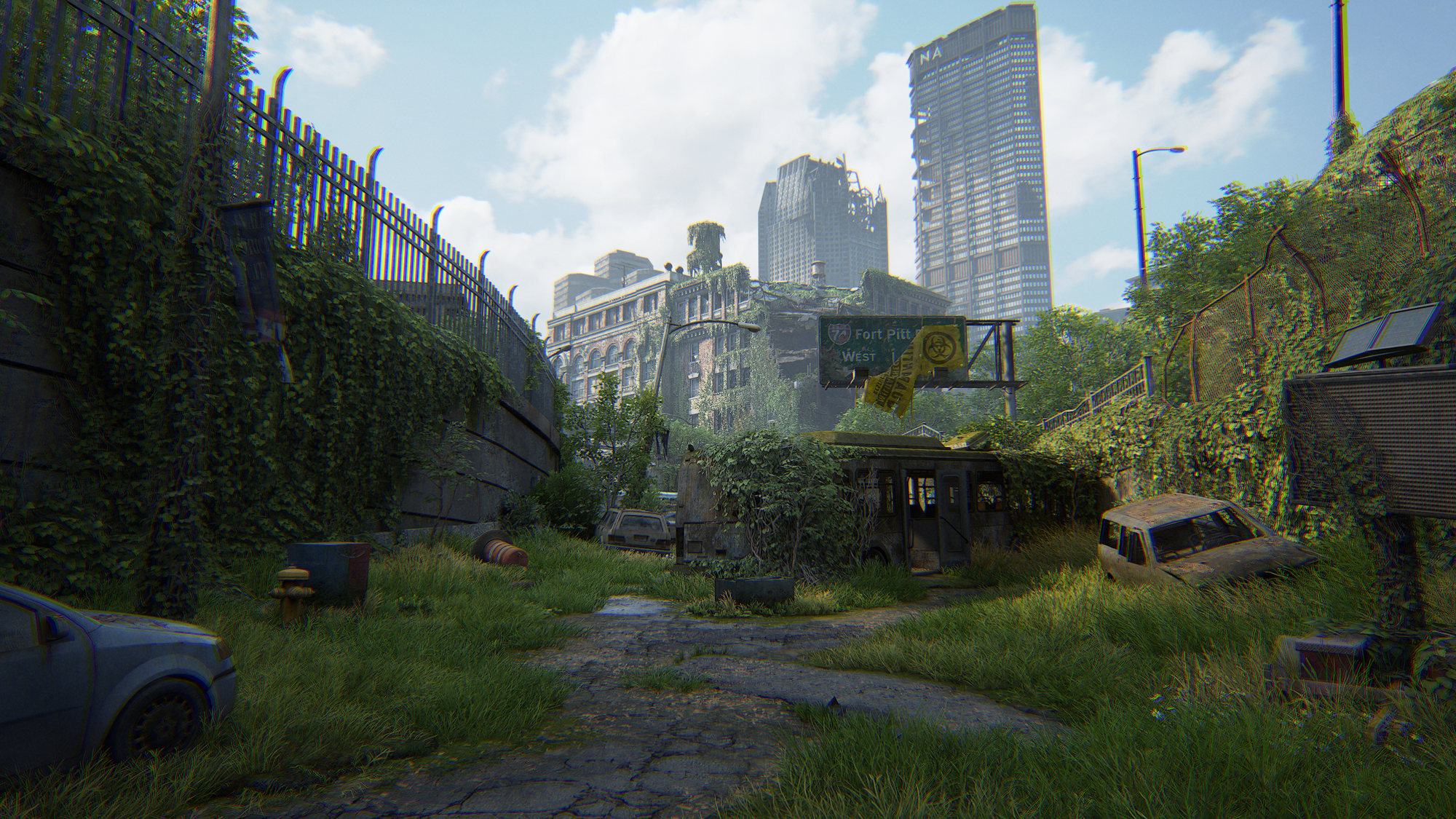
So, that's the big picture look at how the story operates. It serves as a north star for where Joel and Ellie are headed, with the difficult ending being the icing on the cake. The short term is governed by more pressing objectives, like in Bill's town where they're working to find a functional vehicle or in Pittsburgh where they team up with another adult/child duo trying to escape the city. These short-term goals are more achievable and tangible such as Bill being an NPC that physically guides you to your objective or sometimes it's a visible landmark that you're trying to consistently navigate towards like the bridge in Pittsburgh.
The one critique I'll bring up in this area is that the human "bad guys" of these in-between segments fit all the post-apocalypse cliches to a tee. It's really as if the developers wanted to give Joel the most reprehensible humans to slaughter without feeling one ounce of remorse. It's quite the inverse to the complicated moral dilemma I described from the ending. In Pittsburgh, the bandits that ambush Joel and Ellie aren't just bandits, they don't just want your stuff. If it's up to them, they'll run you down, shoot you in the back of the head, and burn your body. In Colorado, its cannibals... So yeah, for the majority of the game Joel, while being morally grey, is quite easily the more relatable and sympathetic figure, especially alongside Ellie. The bad guys are really just that, bad guys. There's not a lot of further characterization that will make your decisions as Joel weigh on you.
The third level on which the story operates is the personal story going on between Joel and Ellie that fills in all the little bits between the action. The relationship between Joel and Ellie is the heart of The Last of Us and has its tendrils in nearly every moment of the game. Whenever there's a moment of downtime after a gunfight or simply a section where you're walking through an abandoned part of town, Joel and Ellie will strike up conversation. The conversations range from light-hearted joking to Ellie prodding Joel about his checkered past. It's some of the most naturally written and acted dialog I've heard in a game. These three levels that the story operates on prop each other up and create something that's more than the sum of its parts. Simple or cliche isn't necessarily a bad thing when you like the writing, and it's layered together nicely like this.
It's also helps that The Last of Us is paced to perfection. The combat, cutscenes, traversal puzzles, and exploration are balanced to perfection to provide just the right amount of downtime and activity for the player. These modes of play also flow together smoothly and don't overstay their welcome. Cutscenes seamlessly transition to exploration during which light conversation will pick up, then combat will pop up as you step into an unexplored building for instance. The game really makes you feel the peaks where the tension is high and then provides a valley where you and the characters can collect your thoughts and lighten the mood.
Combat is the basic 3rd person action/stealth recipe
This is my other misconception and again, this sentiment is not really incorrect, it's just the execution again that elevates the product. To me, a couple key components kept this basic recipe firing at a high level, let's go through them.

First is variety of combat location and context. I think The Last of Us does a great job continuously switching where and why combat happens. Visually distinct areas keep things fresh, while naturally fitting with the road trip across the USA plot. We get downtown Pittsburgh shootouts and Colorado Rockies zombie ambushes all in one game. What I mean by context is that there's often changes in how combat has to be approached. The most basic example would be how human enemies are approached very differently when compared with the ultra-hearing sensitive clicker infected. More specific examples that alter your approach even more would be the town with a sniper at the end of the street or when you have a to fend off zombies as you try and startup a pickup truck. The basic mechanics are always there but the variety is always there too.
Second is the visual and sound design. The Last of Us really goes above and beyond when it comes to real-world fidelity in these areas. The stark gun sound effects combined with the ripping of human flesh and guttural screams of desperation really sell this digital world as something more visceral. The violence is really horrific. Violence is no stranger to video games, but The Last of Us really goes to the next level in depicting the simple consequences of violence.
One praise and one criticism
Before moving onto Part 2, here's two quick fire comments about Part 1. I plan to review Part 2 within the context of Part 1 so there's a little more to come on this first game there as well.
The remake is staggeringly beautiful
I can't speak on playing the original on the PS3 back in 2013, but this 2022 remake is just drop dead gorgeous to look at. The developers went to painstaking lengths to model the post-apocalypse ~20 years after the fall of society. The way nature has encroached on every man-made structure is beautiful in a way only nature can be. I'm just impressed it has been rendered so accurately and with so much detail. Here's the overdue gallery of screenshots that I selected that will convey my point much better.
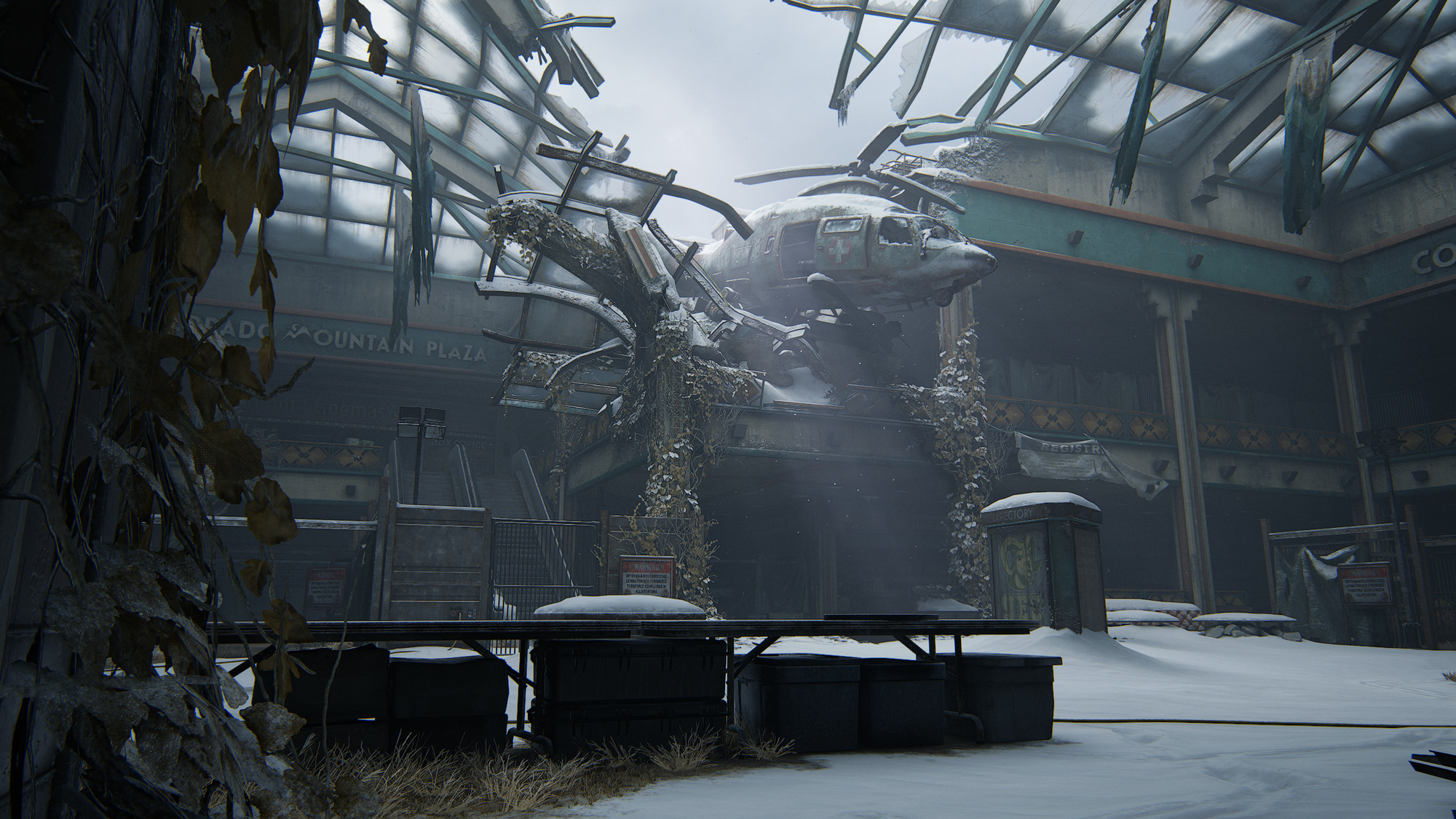
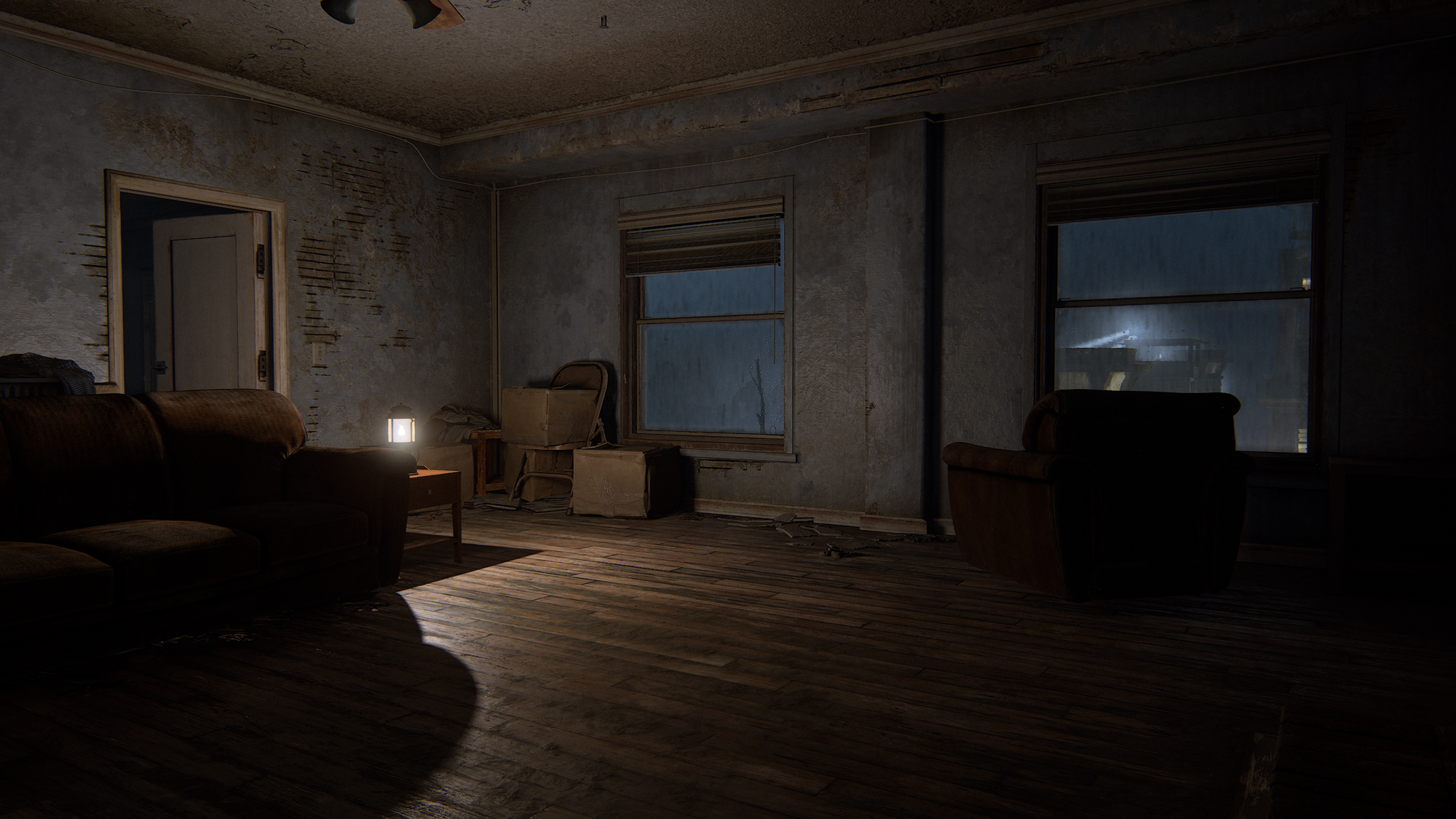
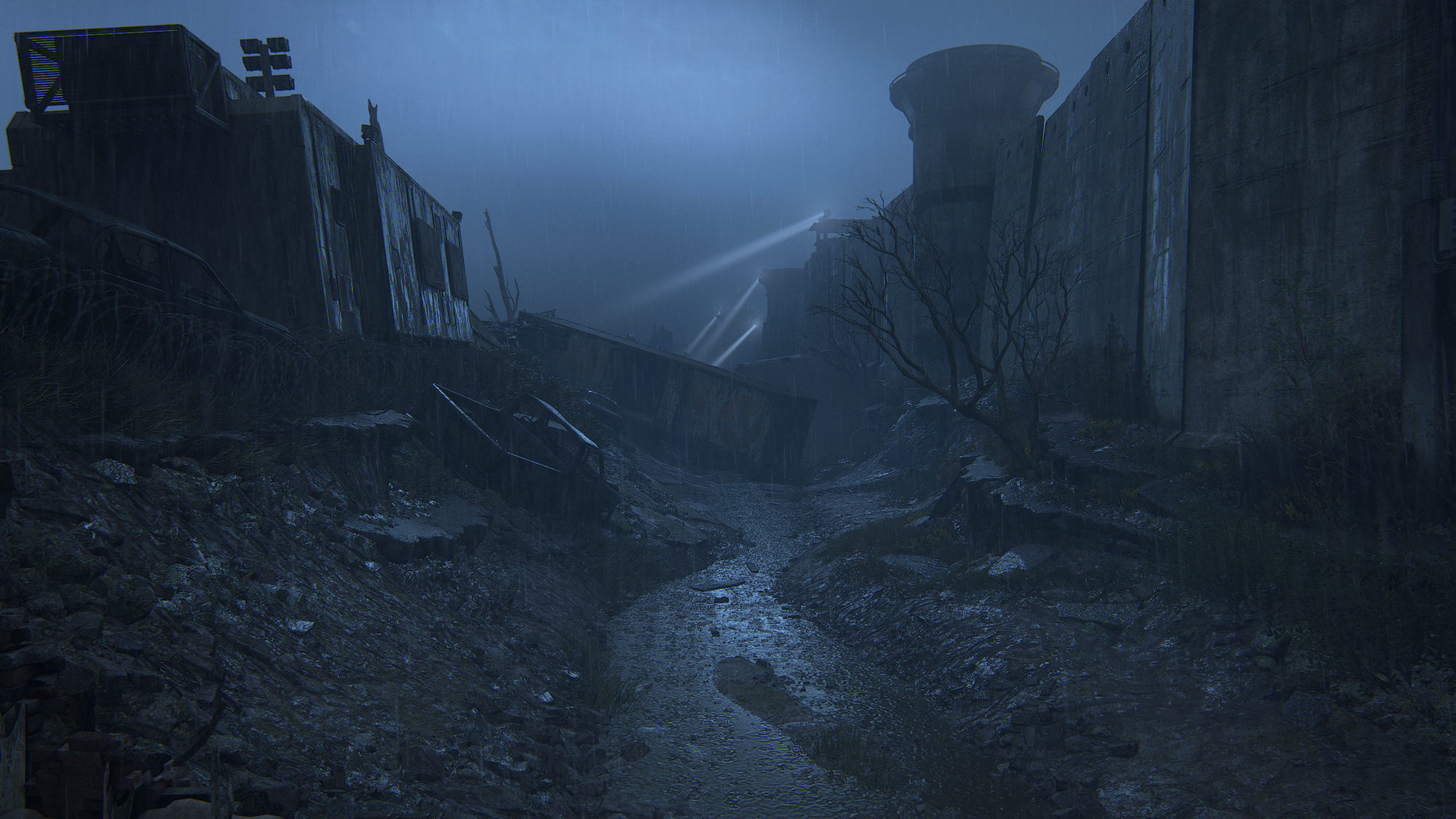
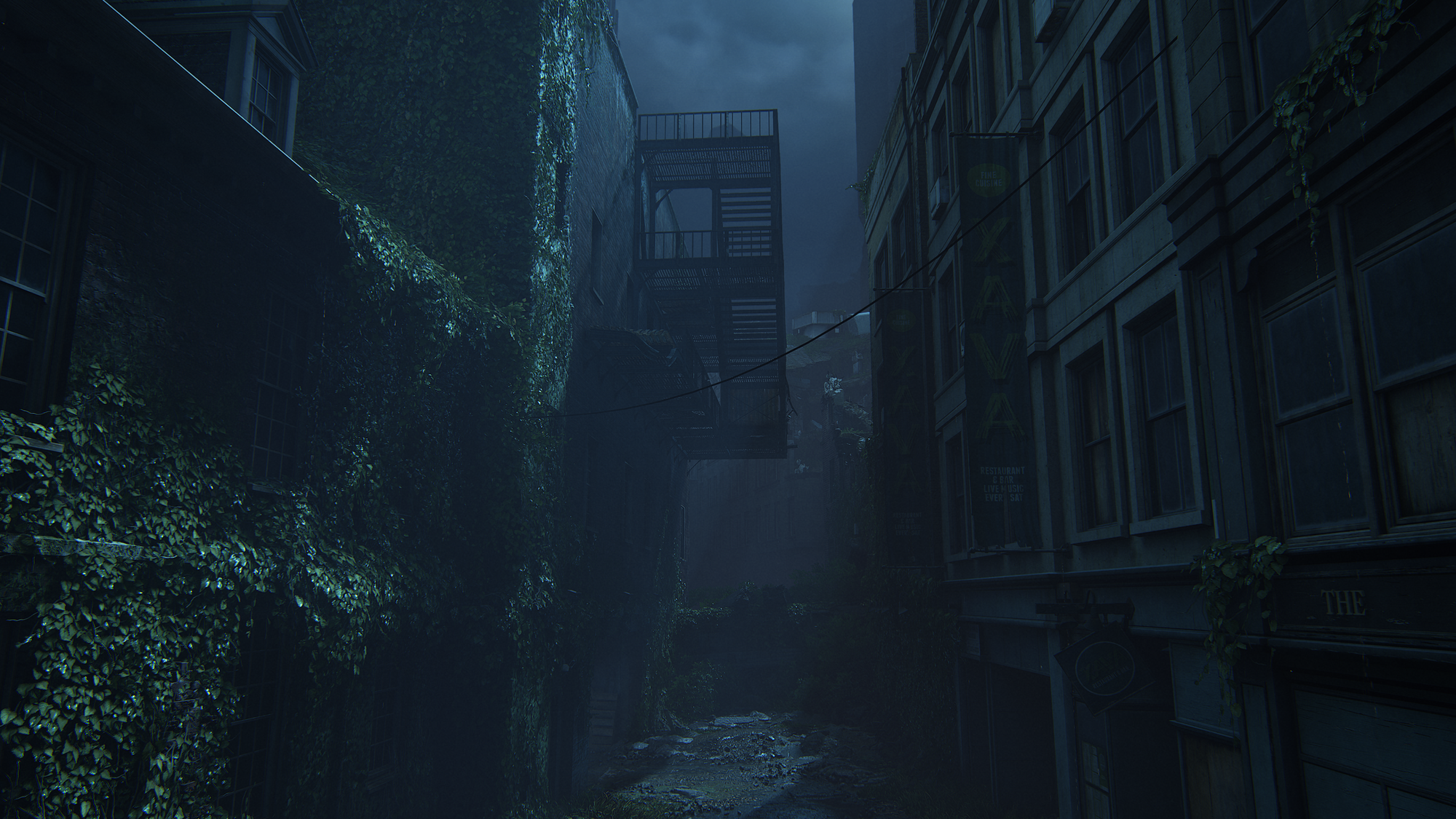
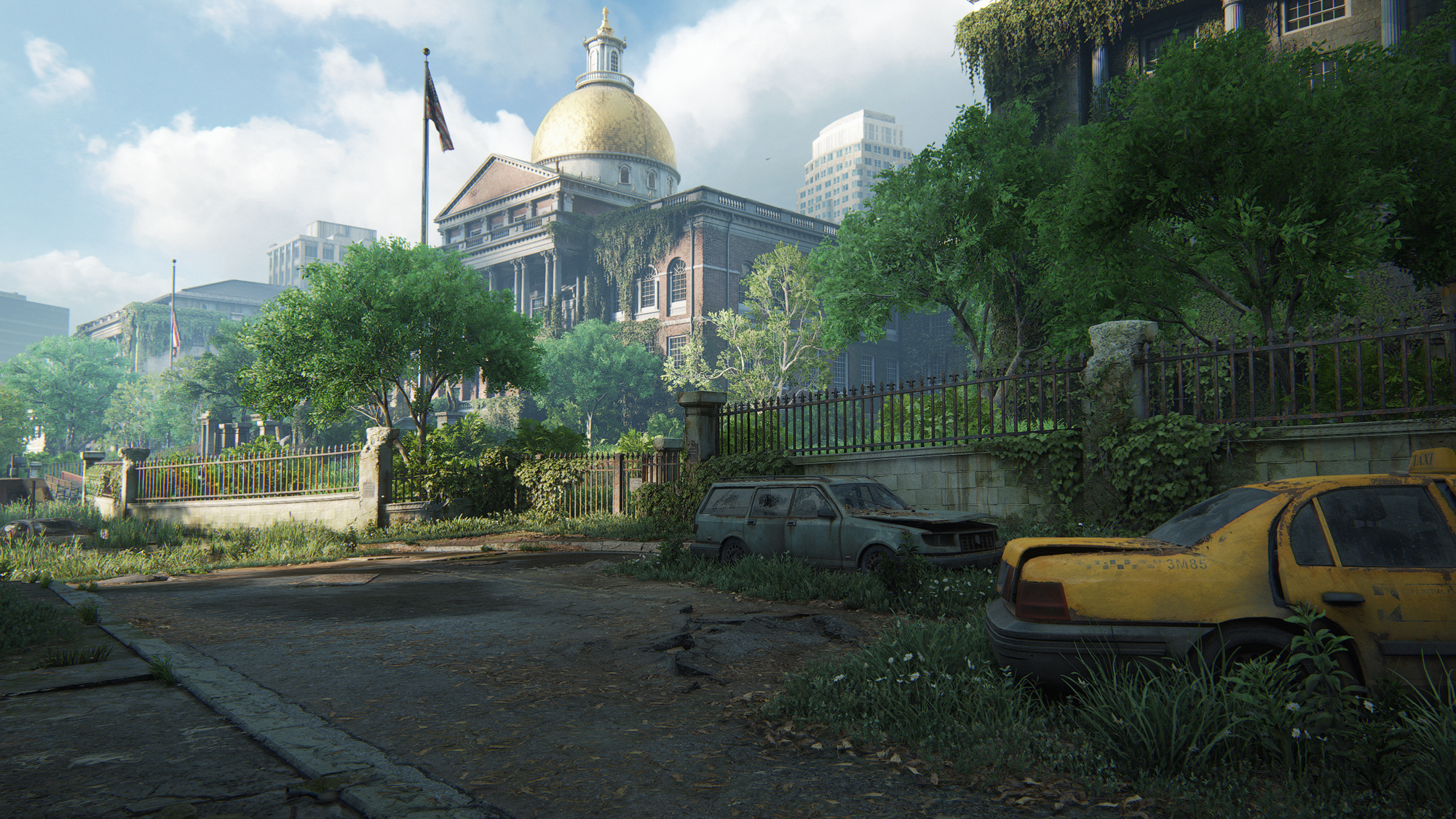


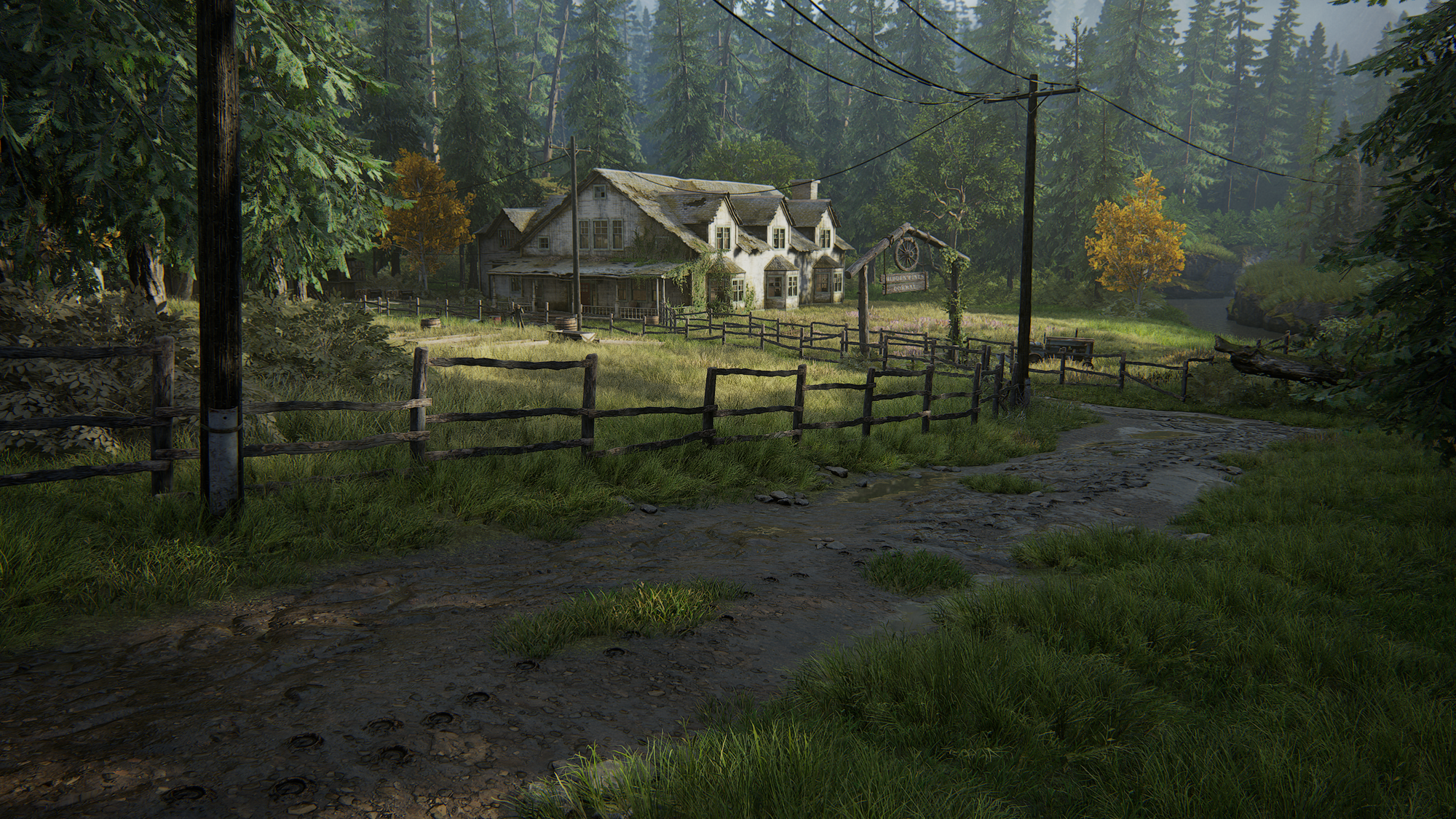
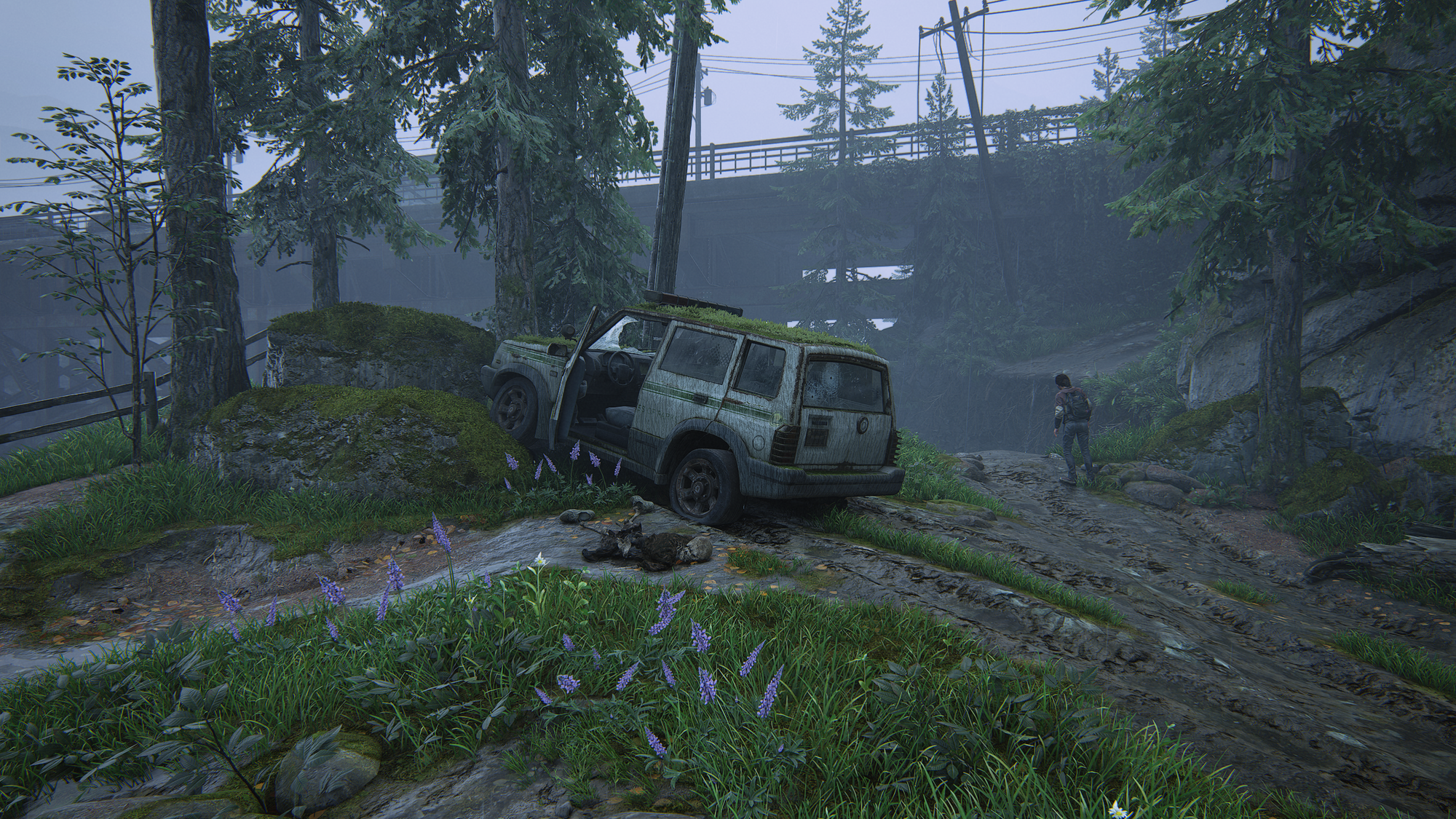
Traversal "puzzles" needed more variety
In the previous section I praised the pacing, citing the excellent balance between cutscenes, action, and exploration. The other smaller part of that puzzle is the traversal "puzzles". I'm not too sure what to call them because they're really not puzzles. It's almost always a matter of climbing something or going over water and the solution is always the same, find the ladder or wooden pallet. I don't think these sections should be done away with though. They provide a nice bit of downtime between the action and usually require some bit of teamwork between Joel and Ellie. My one suggestion would've been to make the "puzzle" and particularly the solution more varied. Picking up and moving a ladder the first two times is fine but after that it's a bit dull and repetitive. This is one area where I actually thought simplicity was not effective.
Verdict
★★★★
The Last of Us Part 1 is an all-time classic video game. The ultra-linear, scripted, narrative-driven action/stealth game is not my area of expertise, but I was really glad I tried something different and thoroughly enjoyed it. The immersive action/stealth combat, the incredible environments, and the iconic relationship between Joel and Ellie were the highlights for me, but really, it's just a very complete and well-rounded package.

Game Information
Game Name: The Last of Us Part II Remastered
Platform(s): PC, PlayStation 5
Developer(s): Naughty Dog LLC, Nixxes Software, Iron Galaxy Studios
Publisher(s): PlayStation Publishing LLC
Genres: Post-apocalyptic, Action, Stealth, Story-based
First Release Date: Jun 19, 2020
Last Update Date: Apr 3, 2025
Description: Five years after their dangerous journey across the post-pandemic United States, Ellie and Joel have settled down in Jackson, Wyoming. Living amongst a thriving community of survivors has allowed them peace and stability, despite the constant threat of the infected and other, more desperate survivors.
When a violent event disrupts that peace, Ellie embarks on a relentless journey to carry out justice and find closure. As she hunts those responsible one by one, she is confronted with the devastating physical and emotional repercussions of her actions.
Reviewed On
Hardware: S.T.A.L.K.E.R.
(Radeon RX 6950 XT, AMD Ryzen 7 5800X3D, 32 GB RAM)
Platform: Steam
Review Notes
- Played on Hard difficulty.
Long Story Short...
Gameplay, great. Level design, great. Visuals, great. Sounds, great. Production value, great. Acting, great. Story... oh boy this one's a doozy.
My feelings on The Last of Us Part 2's story are conflicted because I like the overall premise and many of the frequent character interactions but it's the execution of everything in between the lets it all down. Before getting into my critiques, here's a quick setup to the story, it's what essentially makes up the prologue of this game.
The Last of Us Part 2 picks up five years after the events in Salt Lake City with Joel and Ellie. They've returned to Tommy's town in Jackson, Wyoming and have setup a domestic life for themselves, trying to fit in with the rest of the survivors. Immediately it's apparent that Joel and Ellie's relationship has become strained over the years and it's not just the typical father-"daughter" stuff either. Ellie is clearly struggling with what she's pretty sure is Joel's lie from five years ago. She has survivors' guilt perhaps, her father figure has consistently lied to her, and she had no choice in any of it.
Events begin to escalate when Joel while out on patrol runs into a massive horde of infected along with a young women trying to also escape them. In a rushed introduction, Abby meets Joel and Tommy, and they decide to flee to Abby's group's camp nearby. Upon arrival things happen fast as it turns out Abby is the daughter of the surgeon Joel killed back in Salt Lake. Abby and her friends have been out for revenge since and don't waste time in crippling Joel's legs and tying down Tommy. Abby explains who she is to Joel and begins to torture him. Meanwhile the other Jackson patrols realize Joel and Tommy haven't checked in and begin to search. Ellie is the first to discover the outsiders camp and enters only to be knocked down and then witness Abby's killing blow on Joel. The outsiders leave Ellie and Tommy alive and flee Jackson immediately.
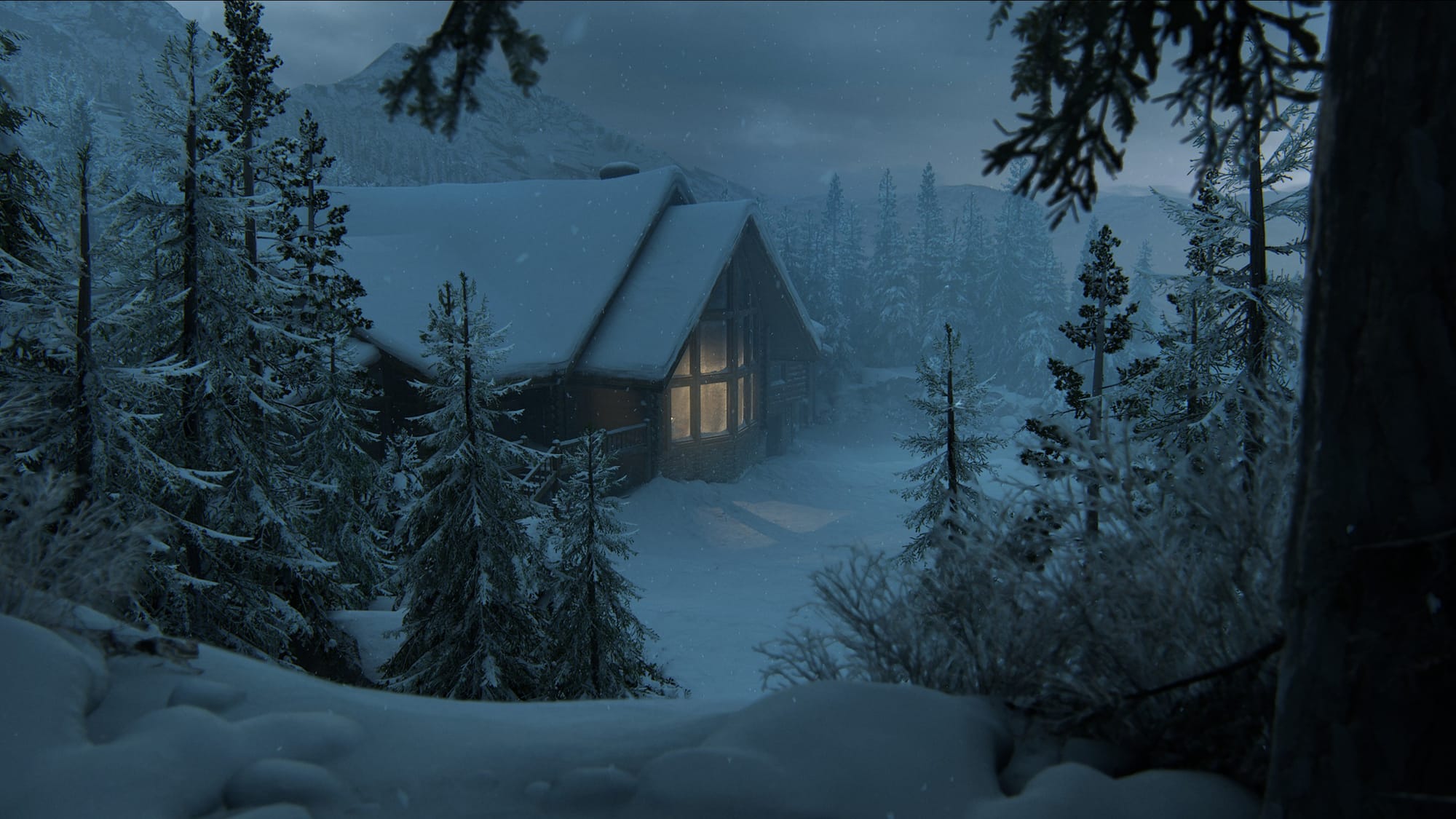
So, what do I think of the setup? Well, it's certainly dramatic. I like how you can sus out where Ellie and Joel are at in their relationship at this point without them really interacting that much. It's clear things are a little strained. The sequences where you play as Abby feel a little disjointed, but spoilers, that's the whole game pretty much. And then Joel's death is tough. It's sudden and seemingly out of character. The cynical pragmatist we played in the first game is immediately caught out in the second game. Obviously, we the player are jumping in at a critical juncture here. The developers clearly didn't want to tell another story where Joel made all the "right calls" according to his pragmatic mind. This plus the brutality of Abby torturing him to death is certainly an antagonizing start. At this point I was surprised and sad, but ultimately excited to see where they'd go with such an impactful punctuation to this prologue.
For the rest of the review, I'll dissect the two campaigns of Ellie and Abby day by day. The game's story is unlike the first, convoluted and too long. So, bear with while I try to hit all the important plot points.
Ellie and Dina Take a Trip to Seattle
In the smartest move of all time, Tommy, Ellie, and friends Dina and Jesse, all decide to set out together to avenge the brutal killing of Joel. Oh wait, never mind, Tommy tries to stop Ellie from going, then the leaves Jackson the next day in pursuit of Abby. At some point when Abby had captured Tommy and Joel, Tommy had noticed one of the group had a jacket with a WLF patch. WLF stands for Washington Liberation Force and this is the lead Tommy uses to go after Abby. Shortly after finding this out, Ellie and Dina do the same, setting out on horseback to Seattle. And last but not least, Jesse decides to pitch in and leaves a couple days later. Why do I mention this? Because this is a theme for Ellie's whole section, poorly planned and haphazard. I'm not sure if this is the intention, but I found it somewhat unsatisfying as the player.
So as an FYI, Part 2's whole middle section is structured into three days, and you see these days from both Ellie and Abby's perspectives. It doesn't alternate though; it's three consecutive days of Ellie and then the same for Abby. Let's start where the game starts with Ellie's Seattle Day 1.
Day 1
Seattle Day 1 is Ellie's journey into the city with Dina. Overall, I really liked Day 1. Dina and Ellie are fun together, as they have a bunch of cute interactions not so subtly hinting at their budding interest in each other. I think The Last of Us games work best when there's a meaningful relationship on screen. The gameplay is varied with some light traversal puzzles, a semi-open world section, a horrific underground/infected combat focused area, and plenty of exploration. The introduction to the visual marvel that is overgrown, apocalyptic Seattle is glorious. Nature has consumed the cityscape, ivy pours through every window, grass heavily encroaches on every street's tarmac, water has broken down the foundations of entire city blocks.
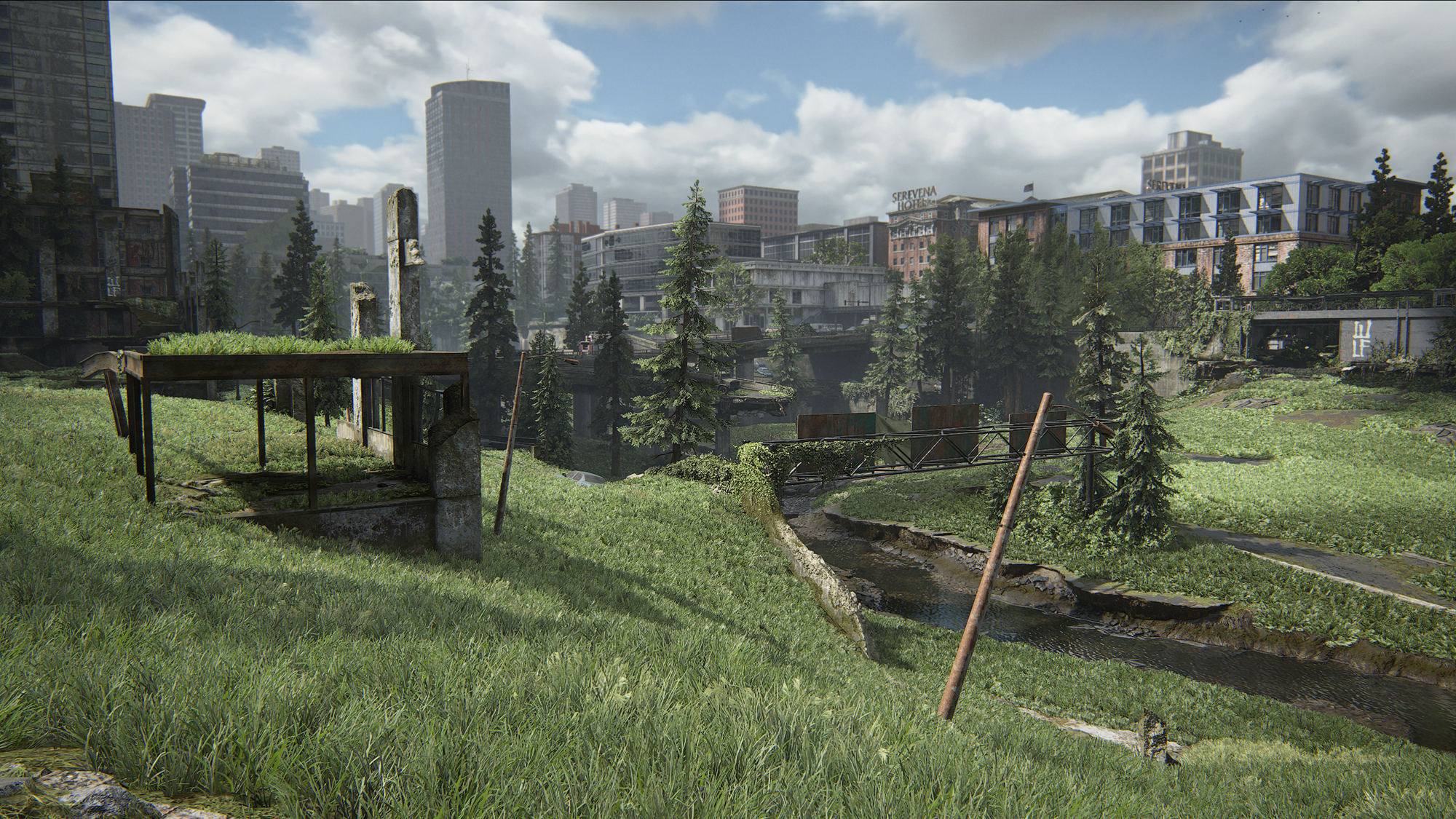
Day 1 is a nice little journey to the inner city that culminates in finding out Dina is pregnant, and you're sort of forced to halt your progress and take refuge in an abandoned theater. Ellie is shockingly awful towards Dina in light of this news. I think the game's ham-fistedly showing you that Ellie is becoming consumed by this revenge quest... Day 1 ends with Ellie clearing the theater and sleeping apart from Dina. At this point in the story, I'm totally with Ellie emotionally but her selfish comments and actions start to create this gap between the player and character. I do admire that the game and its developers were bold enough to not retread Part 1's fairly generic, if not well-done, characterization of Joel and Ellie. It's clear at this point that Ellie has changed and will change more. It's unsettling, especially when we just lost Joel. So, when seeing Ellie become someone else, it's uncomfortable for the player. Her lashing out at Dina feels like her lashing out at what's keeping her connected to humanity.
At the end of each day for Ellie and Abby we get a playable flashback that reveals some moment in their lives that occurred between the two games. I like these in concept, but overall, they hurt the games pacing too much. The problem is that for the most part these flashbacks are just glorified cutscenes. In this first flashback, we go back to when Joel surprised Ellie by taking her to a museum for her birthday. It's all quite lovely, walking around beautiful environments, talking with Joel, and interacting with the exhibits, but it is really just a lot of walking. The problem is compounded by these flashbacks being placed at the end of each day. I get why they're put there in theory, as the character falls asleep, we get to go back in time and learn more about important events. But in practice these walking simulator flashbacks come at the end of the day, where we typically already had some sort of cutscene occurring. Again, I kind of like this day-based structure in theory: you wake up, there's usually a cutscene for setup, then you get into the typical gameplay loop with some short cutscenes mixed in, then night arrives, the action slows down again, and we get another cutscene to finish the day off. Adding the gameplay-lite flashbacks on top of this creates too much downtime for my taste during that night cutscene -> flashback -> morning cutscene stretch. It has certainly turned me off the idea of replaying this game again, despite how much I enjoy the gameplay.

Day 2
Day 2 starts with Dina and Ellie getting back on the same page. Dina, despite not being able to carry on due to morning sickness, helps establish where Ellie should head next in search of Abby. After a crazy first day where they killed too many WLFs to count, Dina seems to realize that running into a city occupied by a militarized force is not the best idea when the goal is to take out one individual. All through this Ellie seems interested in getting to Abby but doesn't care about doing it in a subtle or low-risk way. Dina balancing some of this out is appreciated but now that Ellie must go alone, it feels like new lows are ahead. With no signs of Abby, Ellie must go after her friends in hopes that they will provide some direction. This leads to an issue I have with Day 1 and 2 objectives: I don't know who these people are. The introduction to WLF members other the Abby and Owen in the opening is extremely brief and not the point of the scenes. So, when Dina tells Ellie she needs to find Leah or Nora, I have no clue who these people are.
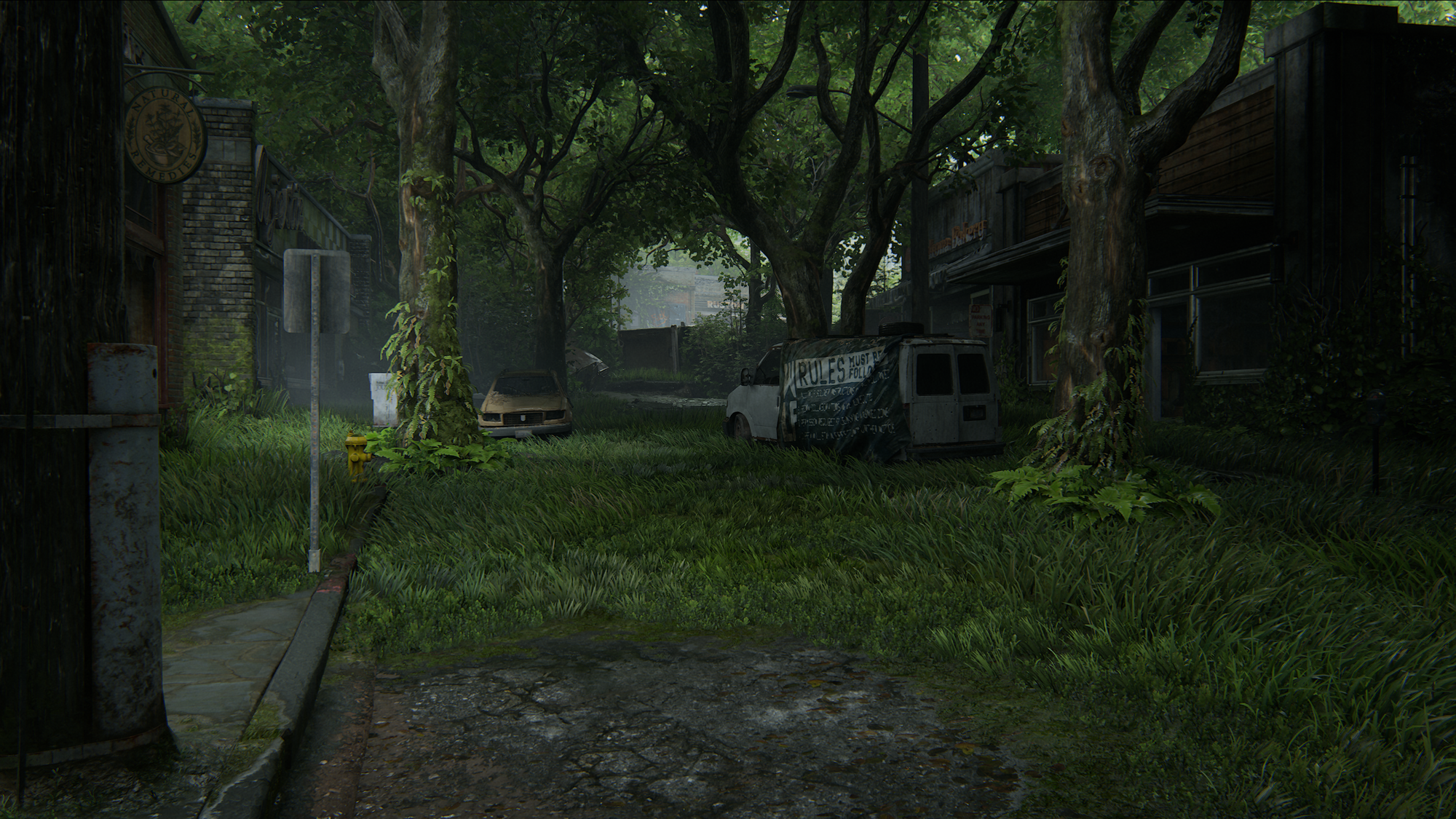
Two sequences in Day 2 shine for me in terms of gameplay. Hillcrest and the initial Seraphite encounters are the combat at its best. The combat arenas are immersive and large. Entire neighborhood blocks or a whole row of shop fronts is where you'll face off with overwhelming opposing forces. Stealth is required but also not the only answer because WLF dogs are introduced as an enemy. These dogs can pick up your scent and flush you out of stealth. It's a great addition to the stealth-action combat recipe of The Last of Us which forces your hand, making you improvise in a new way. Ellie's loadout is coming together at this point too. Her stealth options expand in this level with the new-found bow. The revolver, shotgun, and rifle are all available now and probably have a couple upgrades under their belts. The x-factors are now how you utilize your craftable throwables and your brick/bottle plus melee options.
Day 2 culminates in an assault on a WLF hospital to find Nora. Day 2 on the whole is another long, violent day that ends with Ellie chasing Nora into the spore-infested hospital basement and torturing her for the location of Abby.
Day 3
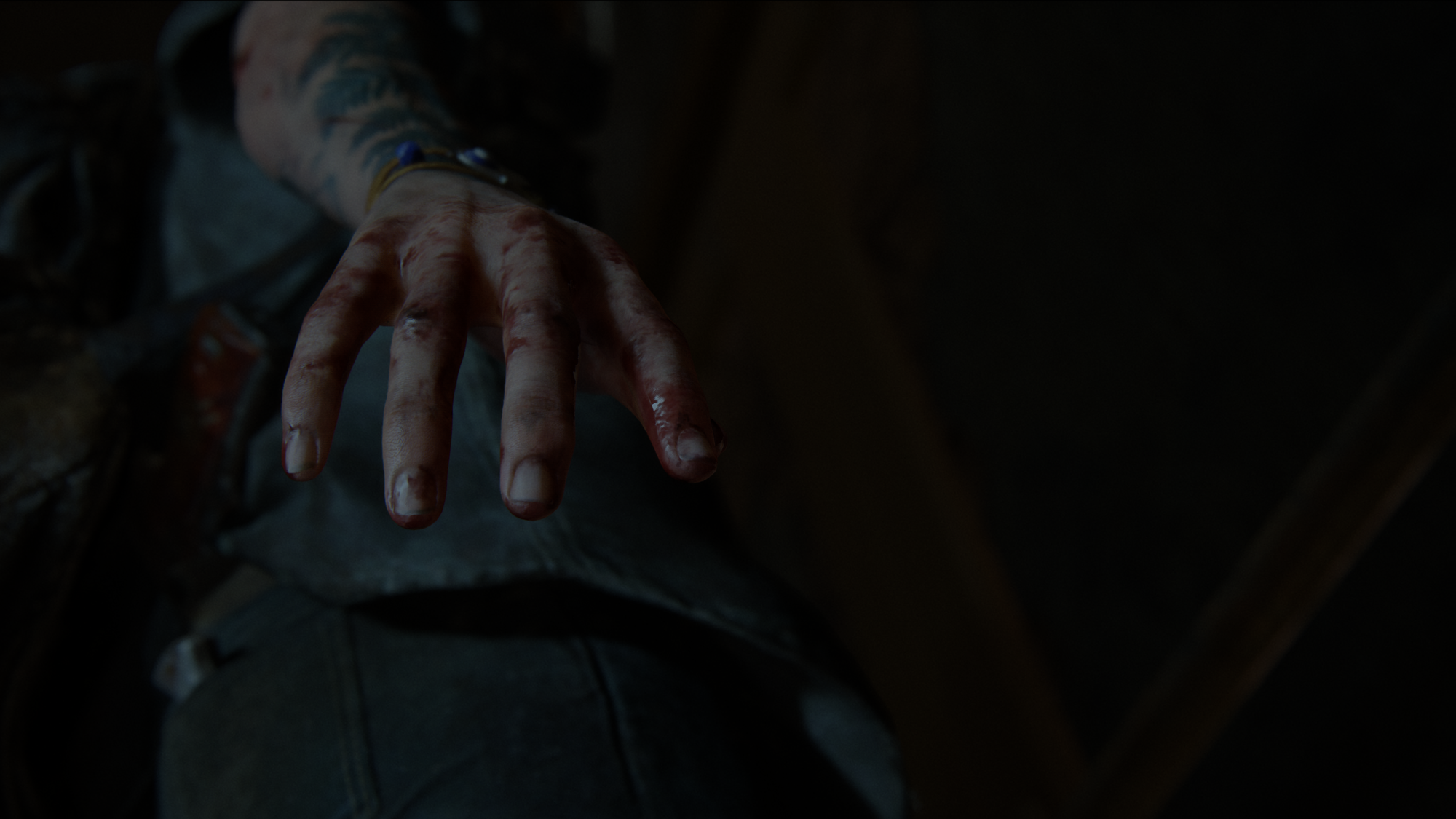
After torturing an answer out of Nora at the end of Day 2, Ellie has a more direct lead on Abby going into Day 3, but at this point the lack of progression and repetitiveness got to me. The first game was wrapping up at around this playtime but here in Part 2 things felt stuck in 2nd gear. There's been no sign of Abby since Jackson, Tommy is AWOL, Dina got sidelined, Joel is obviously dead and limited to these walking sim flashbacks, so going through more of dilapidated Seattle with the not bad but certainly not interesting Jesse feels like spinning your wheels. Overall, I like Ellie's campaign. She has a bunch of these incredible combat arenas that I talked about previously. But there's also a lot of mundane exploration with some small encounters here and there. I think these could be more consistently great if we had intriguing side character(s) to riff off of and a wider variety of environments to take in. Without those things, I think a bit of repetitiveness sets in and limits the heights Ellie's campaign could have reached. I appreciate that this isn't Part 1's Ellie, the places she goes are darker and fundamentally alter how you view her character. For me there was a lot of this sentiment:

Early on I was with Ellie's emotional beats, but as her progress in her revenge quest began to spin out of control it feels like you lose her. If this is intentional, that the developers made Ellie's campaign a bit repetitive with the violence and collateral damage being so extreme as to alienate you to Ellie and her cause, well then bravo.
Here's three things that I think would've elevated Ellie's campaign for me. One of the days Ellie should have teamed up with Tommy and we could have got a good bit of character/relationship building dialogue between the two. More varied environments, like in Abby's section, would have been great. And I think the WLF members we were going after could have been fleshed out better ahead of time. But I am conflicted on this last point, I do think the game and the story are a little at odds here. On one hand I think from a video game objective design point of view, having clearer objectives and in this case more well-defined people to go after is a good thing. But on the other hand, in terms of the story, Ellie, our player character, caught only a couple glimpses of these characters in a moment of horror and rage and that's it, that's all she knows. So, it does make sense that we the player have little knowledge of these people too. But at the same time, the game did bother to put us in Abby's shoes right from the beginning, albeit very briefly. So, you can see why I'm conflicted on this and that's why I think slightly improved companions and level design could've smoothed this over for me. Anyways, the real problems with the game are just on the horizon...
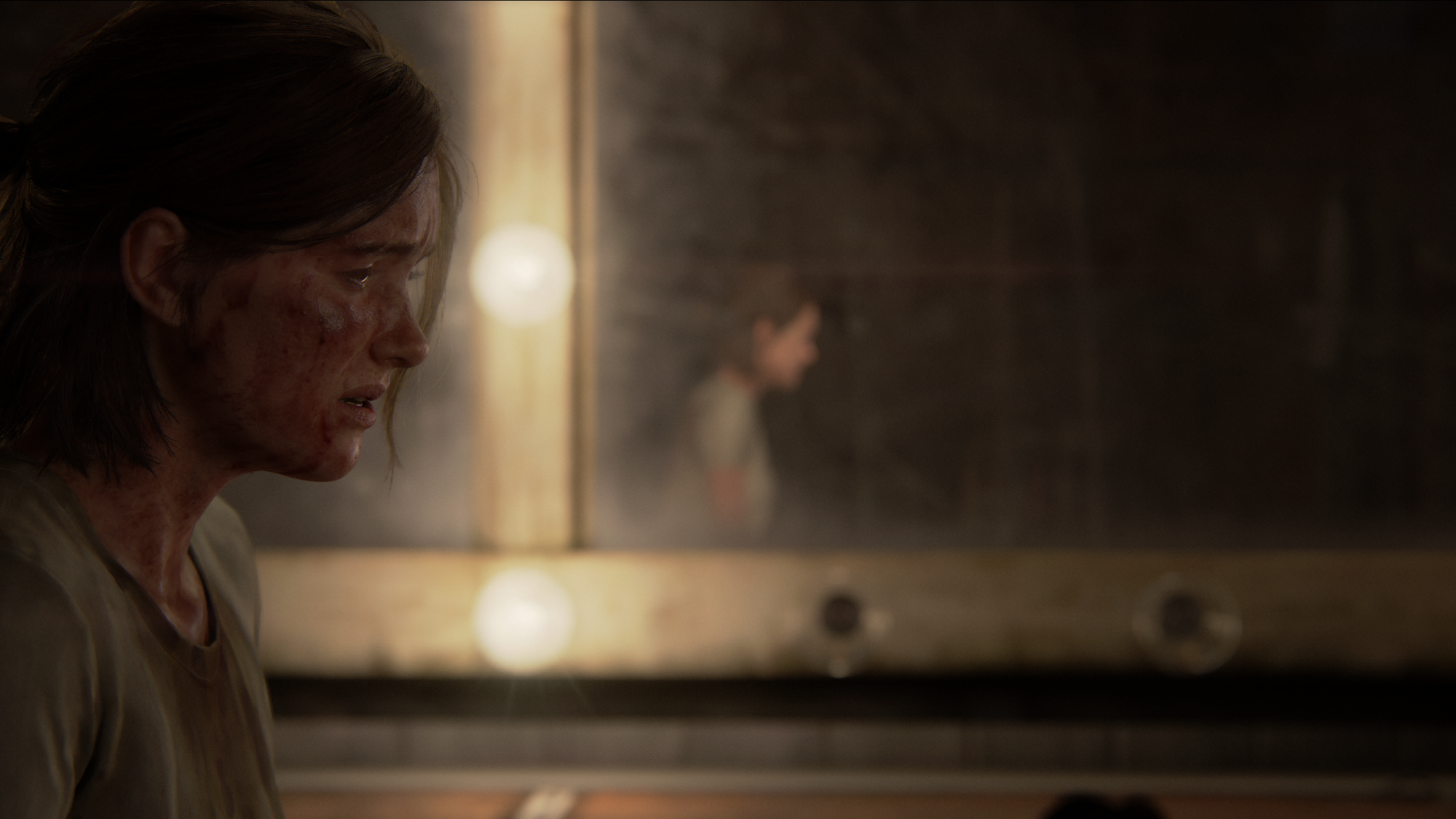
When Ellie gets to where she thinks Abby is at the end of Day 3, again, there is no sign of her. But guess what, there's two more of her friends who Ellie proceeds to murder. It is what it is, Ellie is in a fucked up place at this point panicking most likely at what she's become and no closer to finding Abby. Luckily Jesse and Tommy show up to pull her out of her panic attack and regroup back at the theater. Ellie awakes the next day to Tommy yelling in the lobby. She rushes out with Jesse only for Jesse to immediately get shot and killed by Abby, who is holding Tommy at gunpoint. Ellie ducks out of the way, but by threatening to kill Tommy, Abby forces Ellie to come out and face her.
Abby's Unrelated Romp Around Seattle
Hard cut back to Day 1 Seattle but this time from Abby's perspective... Except we already know these three days are going to have pretty much nothing to do with Ellie. Before we really get into it, I want to preface this by saying that I think Abby's campaign is good in and of itself. I think if it was a standalone experience as in a spin-off game or a RE4 Separate Ways-esque expansion my feelings would be changed significantly. But as it stands, Abby's campaign is a full "The Last of Us" type game that comes on the heels of the previously described cliffhanger and fits into the same Day 1 through 3 structure of Ellie's campaign. This changes the expectations quite a bit. First, I think if the game does this, it shouldn't destroy the overall game's pacing. A single game isn't supposed to be structured like season 1 and 2 of television show. Second, if the events of the two campaigns are going to occur on the same days in the same location, I think that implies some sort of tangible connection between the two. Ultimately, these expectations of Abby's campaign, based on how it's framed and positioned, let it down. Enough preamble let's get into the details.
Day 1
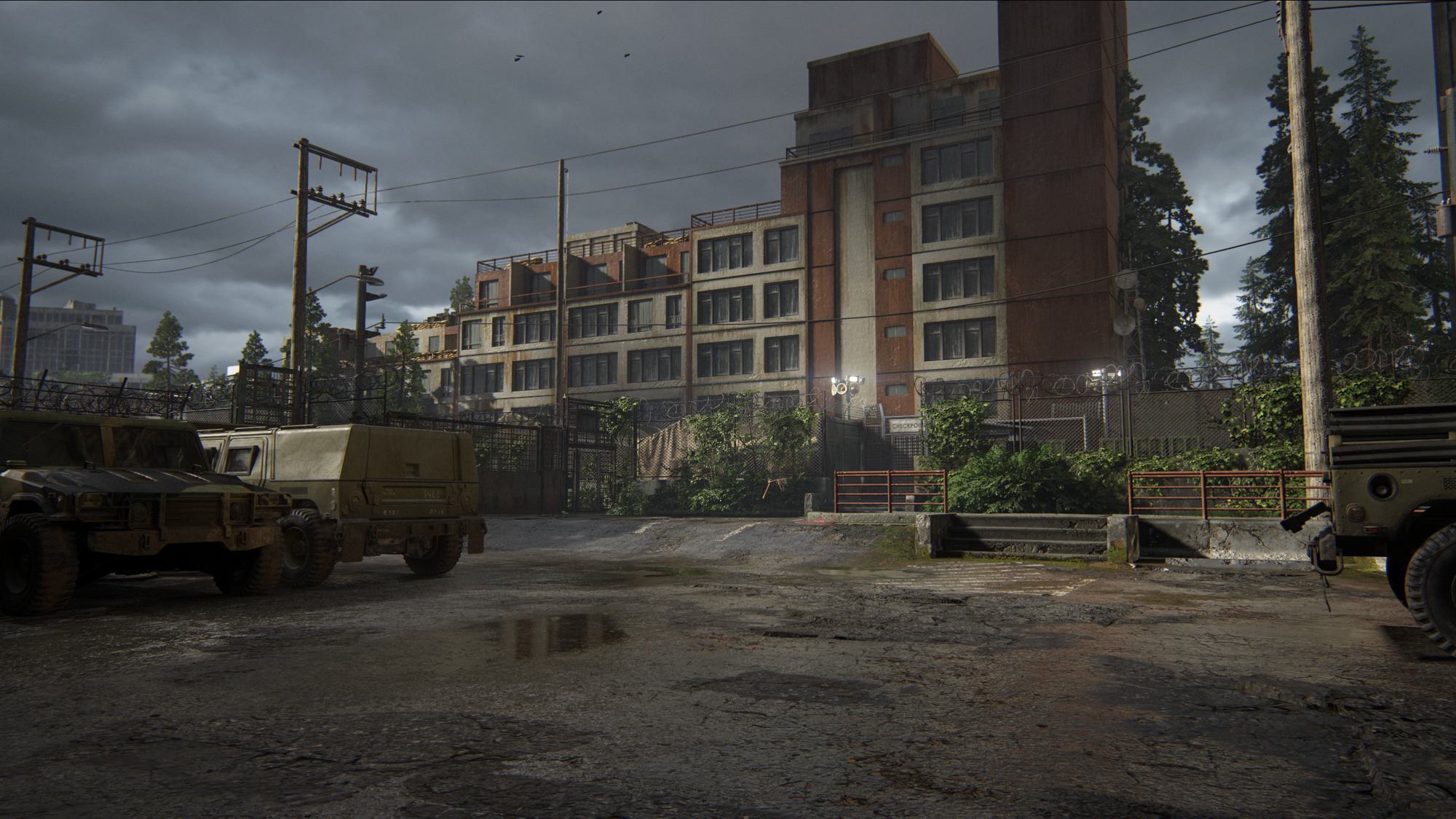
The start of Abby's campaign feels aimless... What are we doing? What is the significance of Day 1 in Seattle for Abby. Well, it just so happens that the same day Ellie arrives is the same day Abby goes through a whole lot of personal change. After a long midgame prologue where you learn about Abby's past and a whole bunch of pretty cool WLF world-building stuff, we get our first objective: go find Abby's ex-boyfriend, Owen, who's seemingly gone AWOL. This directly goes against WLF leader Isaac's orders, who's planning a significant military operation against the opposing faction in the area. In effect, she's going AWOL as well now, so she's on her own.
Abby's Day 1 feels so random to me. Why? Because after that massive cliffhanger, we have the thrilling goal of finding our ex-boyfriend, who's probably hiding out in the same place he always is, the aquarium on the coast. Despite this seeming like a relatively mundane task, getting to the aquarium is suddenly quite treacherous. I know this is somewhere Abby and Owen have been several times before... Why isn't there a safeish path? Why am I fighting, stealthing, and looting my way there? What does any of this have to do with Ellie? I guess it's just coincidence that Abby is going through these things on same day Ellie happens to be on the war path.
Outside of the premise, Abby's campaign is simply more The Last of Us style design and gameplay. Beautifully detailed apocalyptic environments, top notch acting and CGI for the cut scenes, the smoothest animations for everything you do, and tense, fun combat, it's all still there. In a bubble I don't mind Abby's campaign, but unfortunately it follows Ellie's and does nothing with that story while not evolving the gameplay in any meaningful ways. The issues that I'll get into with the story and pacing exacerbate my issues with the game's length. An immaculately paced and written story could keep me engaged for 30 hours even with this tried-and-true albeit simplistic gameplay formula, but that's not what we have here...
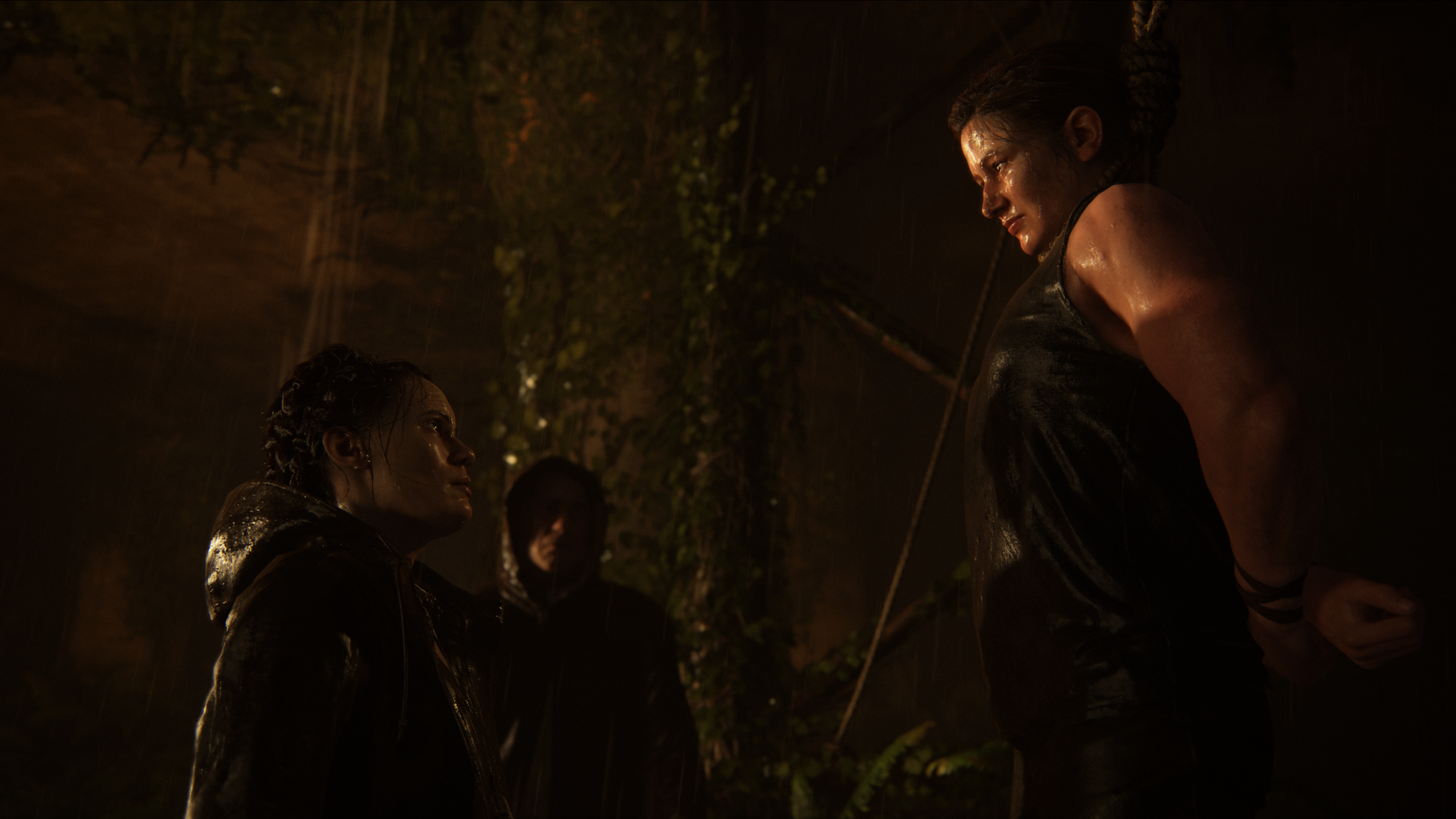
On her way to the aquarium, Abby gets captured by that opposing faction I mentioned earlier, the Seraphites (or Scars if you're a WLF). And then right as she's being hung to death, she's saved by two younger looking Seraphites. In the dark, Abby escapes with them on foot. After finding shelter, it's clear the older Seraphite, Yara, is significantly injured, her left arm being nearly bludgeoned off by her own people. Abby leaves her with the younger Seraphite, Lev, and continues onto the aquarium to find Owen. For this entire section, I couldn't stop asking: why is this happening, why is this particular set of events happening in this particular game? I kept thinking something was going to happen having to do with Ellie, Tommy, Jesse, hell anybody having to do with what I considered the "main plot" of the game. But no, this might as well be a different game at this point. Day 1 ends with Abby finding Owen at the aquarium and me thinking that Days 2 and 3 will surely have more to do with Ellie's story.
Days 2 and 3 because I'm over it
The start of Day 2 immediately confirmed my fears; Day 1 was not just a side plot, that was the start to Abby's arc. Upon awaking, Abby is instantly regretting leaving the two Seraphite outcasts on their own, so she decides to go back for them in hopes that she can help. I'm going to fast forward through the rest of this because I just don't really care that much, so here's the SparkNotes for Abby's campaign. Abby finds Yara and Lev. Yara is in bad shape because of her arm. Back at the aquarium, Abby's friend Mel, a medic, says she can help Yara but needs medical supplies. Abby and Lev decide to go to a WLF controlled hospital to retrieve said supplies. They get them and upon returning Mel is able to save Yara's life by amputating her arm. This whole time Owen has been planning to leave Seattle and find a group of Fireflies in Santa Barbara. Owen and now Abby are sick of the cycle of violence perpetuated by these warring factions and want to find a better group to be a part of. The rest of the group is onboard with leaving, but then Lev runs off to try and convince his mother to come with. Oh yeah, and Lev is trans, this is why they're outcasts, Seraphites definitely have religious extremist vibes. Yara explains that their mom will definitely turn them in, that's how devout she is. So, Abby and Yara decide to go after Lev. At the same time, the WLF is launching a military incursion into the heart Seraphite territory in hopes to wipe them out. Abby and Yara run into WLF, specifically Isaac their leader, Yara is killed, Isaac is wounded, Abby and Lev escape. As the whole island burns to the ground, Abby and Lev find a boat and head back to the aquarium where they find Owen and Mel dead. Fortunately, Ellie left her map behind which Abby and Lev use to track her down at the theater. And that bring us back full circle to the cliffhanger from Ellie's campaign. Now with that all explained, let's get into the big issue I have with Abby's story.
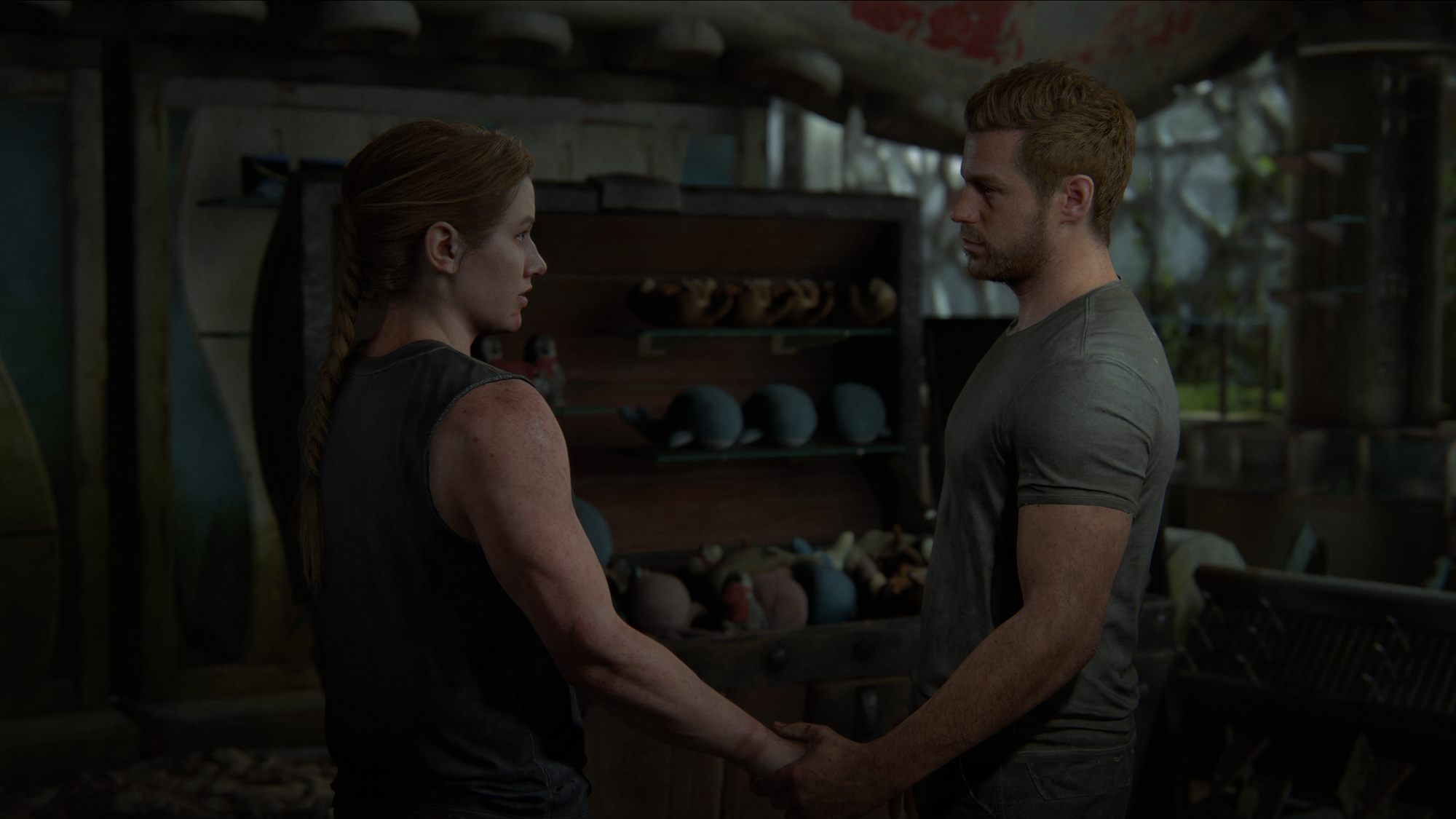
The Last of Us Part 2's story is at odds with its gameplay, specifically in Abby's campaign. I've never played a game that has made me so revolted by violence. At so many points throughout, the player is forced to carryout absolutely vicious acts of brutal violence. But it also has the main characters stop at critical moments to leave one another alive, showing mercy in an otherwise merciless world. Outside of these few moments, death surrounds you, it’s the only option. Much like Part 1, Part 2 is a linear, highly curated narrative where the player has almost no agency. You're an actor in a carefully orchestrated play and you must play your part. This type of game is new to me and I kind of enjoyed taking a step back, turning my brain off, and letting the game take the wheel in Part 1. That game didn't let me down. It took me on an up and down journey and I was engaged, ready to play my part the whole time. With Part 2 I struggled with this, I wasn't always engaged, and I didn't always want to play my part. Two major reasons for this are the pacing/structure which I already touched and then the big picture motivations for doing what I was doing. Let's talk motivations.
So, Joel dies, Abby brutally murders him for what he did to the Fireflies and specifically her father, the surgeon, back in Salt Lake City. This starts Ellie's and the player's quest for revenge which is the focus of the first 15 hours of the game. My main issue with Ellie's section is that it's a bit one note. A lot of people die, not a lot is accomplished, and we talked about all that in my section on Ellie. Over the course of 3 days Ellie essentially slaughters dozens of WLF soldiers while picking off Abby's friends but never finding her. It's this appropriate yet unsatisfying spiral into darkness. Ellie's campaign is a slow, revenge-driven bloodbath set in various, rainy neighborhoods of Seattle. It's one note, but at least my motivations were crystal clear. Ellie's goal, my goal, the game’s predetermined path, and importantly, the game's mechanics were in alignment: revenge for Joel, even if that meant cutting down an entire army. I want to highlight the game's mechanics once again because it is vital to note that the one way a player has to mechanically engage with The Last of Us Part 2 is by killing things. If I was to oversimplify slightly, in this game there's the story and there's killing things, that's kind of it.
Abby's campaign has the opposite problems. Her campaign is far from one note. She goes through a lot more varied locations with different and interesting set pieces. The story in her campaign goes a lot of places, does a lot of things, accomplishes stuff, and her character does seem to change some over time. But her motivations and why this story is even being told in parallel with Ellie's still baffles me. Over the course of her campaign Abby begins to come to terms with the error in her ways. Revenge did not change much for her, and it only revealed the issues she had with her current faction, the WLF. This is where disparities between what I thought Abby would do and what the game forced me to do appeared. Despite her self-reflection and budding interest in changing her violent ways, the game forces combat sections onto the player where Abby must kill. The instance that stuck out to me the most was attacking the Seraphites defending their homes from WLF invasion. It felt completely at odds with Abby's goals and her story. But what should I have expected from the game? Like I said, gameplay-wise it's setup to do only one thing: kill. This is the story going places that the gameplay can't follow.
With Part 1 I fell for the illusion, I rarely, if ever, thought about my lack of player agency. Part 2 is where that changed. Abby's section in particular I find very grating as what I thought Abby would do clashed with what the game was forcing me to do. I think this is game's biggest failing.
The Cliffhanger
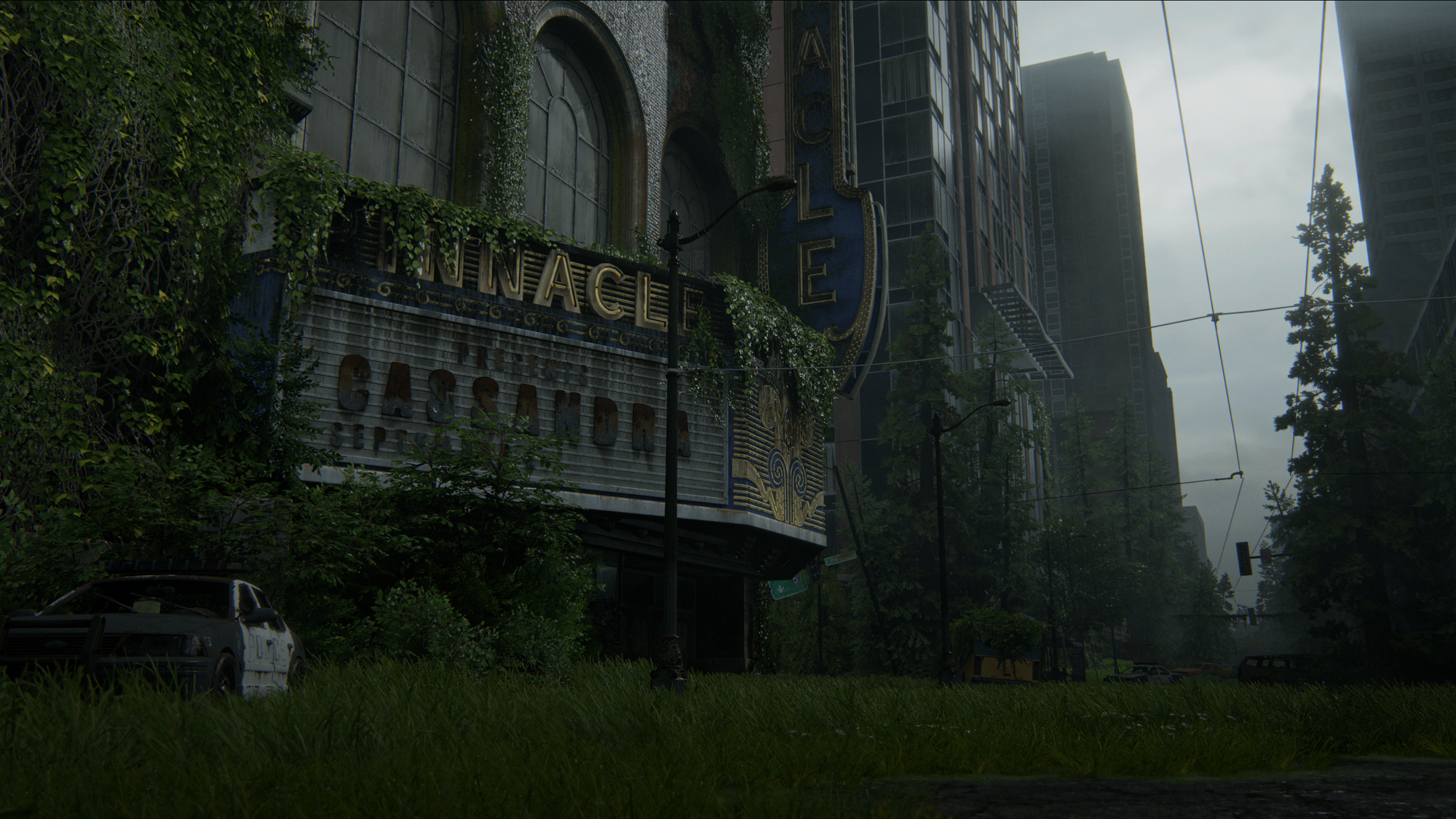
And then we finally get back to Ellie at the theater being held at gun point by Abby. Mid conversation, a hobbled Tommy tackles Abby only to be thrown down and shot in the back of the head, giving an opening for Ellie to escape. Abby pursues Ellie culminating in an odd boss fight that ends with Abby having the opportunity to kill both Ellie and Dina. And here's yet again where the gameplay and story clash. Abby has just, without second thought, shot Tommy and Jesse in the head along with countless Seraphites and WLFs back on the island. But now that she's faced with killing the person who just murdered all of her friends, she once again backs down. Abby spares Ellie's life once again, along with Dina's and leaves with Lev for Santa Barbara.
This whole situation is weird... You play as Abby and your goal is to kill Ellie, I think. But you were just playing as Ellie for 15 hours and Joel for 15 hours in the Part 1, so you probably don't actually want her to die. But you are playing as Abby and if you fail (die) in the boss fight that's game over, try again. But cutscene Abby is trying to reform her ways while in-game Abby has slaughtered anyone who stands in her way sooooo I don't fucking know! It's a damn mess! It's confusing for the player, Abby is confused as a character, and the only one with clear motivations at this point is Ellie. But her motivations lead to killing Abby which is just a game over...
But Wait! There's More!

Yep, there's a whole other section here where Ellie, a year later, tracks down Abby in Santa Barbara. I guess the writers couldn't resist giving Ellie the same exact chance Abby had at revenge. Of course there's a drawn-out boss fight and of course Ellie doesn't kill Abby in the end, it was written in the stars. The story rhymes kind of like poetry. I said it before; this game is incredibly violent and brutal. Our main characters inflict so much pain on others it's nauseating. But when it comes to finishing the job, putting either out of the others misery, they suddenly grow a conscience and can't do it. I really wasn't that emotionally involved to get worked up over this fact, the previously described issues in Ellie and Abby's sections had done enough to detach any connections I had to these characters. Really this ending was just par for the course. You could see Ellie's decision to spare Abby coming from a mile away because cutscene main characters are very different from gameplay main characters. To me, Abby's campaign felt like the game had gone on too long, I really didn't need this Santa Barbara section either.
There's one perspective I want to address that I've seen while reading other reviews that I think causes a fundamental divide in opinions. It's the sentiment that if you reached the end of the game and wanted to kill Abby you missed the point of the game. In my opinion, this statement misses the true criticism of the game's story. In my experience, I didn't want to kill Abby, but maybe I thought Ellie should have. If you conflate the player's sentiment with how Ellie's character is written, then I think you can make this mistake. After a ten hour campaign with Abby, I was certainly able to empathize with her perspective in life. But I am not Ellie and Ellie doesn't really know what Abby's been through or vice versa. Ellie not killing Abby at the end isn't that surprising considering the circumstance. Time has moved on since that initial rush for revenge right after Joel's killing. Ellie's life has moved on; she should've moved on. Abby is practically on death's door already. Abby has already spared Ellie twice. I honestly find Abby not killing Ellie in the theater more surprising considering everything that immediately led up to that moment. Having Lev, one of the most sympathetic characters in the game, step in and tell Abby to not kill Ellie I think is extremely manipulative on the writer's part. And I'll say it one more time, if the gameplay wasn't entirely about killing humans, I think things would fundamentally change. If Abby wasn't killing her own WLF faction members hours before sparing Ellie, I would think about that decision very differently.
Verdict
★★★1/2
To sum up my thoughts on The Last of Us Part 2, I'd say it's a mixed bag. The aspects I liked about it are clear as day. This is some of the best combat in video games ever. I love it and it fits alongside Metal Gear Solid V as my top-notch action stealth games. A good action stealth game, in my opinion, should flow freely in and out of these two modes, rewarding the player for both aggression and thoughtfulness. The combat and stealth should feel equally great to play and this is where Part 2 excels. Every animation is fluid and free flowing, yet every action has weight. Shots from your pistol echo through buildings and put holes in people's orbital bones. An axe to the sternum has never felt so crunchy and meaty. An arrow whizzing past your face makes me literally flinch in real life. The enemy AI is so much fun to test yourself against. Getting jump-scared by a flanking enemy never happens in other games, here it's a common occurrence if you're not careful. Enemies track to where they last heard or saw you, not magically to your current location. Combine all this with the best-looking, most detailed, phenomenally lit game environments I've ever seen and now you have one hell of an immersive action stealth sandbox.
The mixed bag part comes in when we start talking about the story. In terms of production value, The Last of Us Part 2 is industry leading. These are incredible cutscenes with the best facial animations and acting. The moment to moment writing and during-gameplay interactions I still really like. I think that's a fundamental part of making this type of game work. Companions like Dina and Lev really help the feel of the gameplay in their respective sections. Even the macro story I'm pretty onboard with. I frequently indulge in the most miserable of movies. But the execution and pacing of the revenge/redemption/cycle of violence plot lost me so hard. Looking back at how safe Part 1 played it, I'm totally onboard with games and their stories pushing the envelope. I'm glad a story like this was attempted. I just think Naughty Dog fell short.
Addendum (6/25/25)
In the time since writing this review I've had the chance to finish season 2 of The Last of Us, replay Part 2 up to the end of Ellie Day 1 on Grounded+, start playing Death Stranding, and find a golden nugget of an analogy in Matthewmatosis' review of Part 2. This confluence of factors compelled me to add to my original review.
First off, I did end up finishing season 2 despite what I say below, but none of those remaining episodes did anything to change my mind. The show fails to stand on its own and is an absolute parody of the source material. Because of how bad it was, I was really motivated to give replaying Part 2 a shot just to cleanse my palette so to speak. So yeah, I've started to replay Part 2 and thus far I'm really enjoying it! Although, maybe not for much longer...
My conclusion at this point is that Ellie Day 1 is far and away the best part of the game. I had so much fun replaying this portion and it was such a smooth ride. We get light transversal puzzles, a small open-world section, horrifying underground infected encounters, a variety of tense WLF skirmishes, brief yet informative cinematics throughout, and Dina's alongside Ellie the whole time. I appreciated the subtle interactions between these two. Ellie sensing something's wrong with Dina but pushing on, Dina being somewhat shocked by Ellie's increasingly violent actions, all while the two clearly having affection for one another. It adds a very important human interaction element to this whole equation. But my big takeaway when comparing this to the show was the disparity in tone and atmosphere. The way the world looks, characters act, the writing, and even how shots are composed feel levels above the show. It's like jumping from a CW show (if that's still a thing) to something on HBO, like The Wire or The Sopranos.
So, what's this have to do with Death Stranding? Well, I'm about ten hours in and I find the game completely exhausting to play and I've been trying to figure out why. In replaying Ellie Day 1 and viewing the aforementioned Matthewmatosis video I think I've come upon the answer. Here's the standout quote from that video (The Last of Us Part 2 Review - 14:45):
Maybe you've heard the analogy that extroverts expend energy when alone, whereas introverts expend energy in the company of other people. Something similar is true for games. I'm a mechanical extrovert—I recover energy when I have full access to my moveset, and I'm placed in a scenario where I'm expected to make use of that. Conversely, I expend energy when freedom is taken away because to me this comes with a feeling of being constrained along with a desire to break free from those confines.
When I heard these lines, everything clicked. It explained a lot about how I feel about certain games and certain mechanics within said games. Ellie Day 1 hits the flow state for a "mechanical extrovert" like myself as Matthewmatosis puts it. It gives the player full access to all of their abilities, only stripping it away for brief cutscenes. Death Stranding on the other hand had me consistently frustrated due to its restrictiveness. Back to back to back, long cutscenes that have mediocre, Kojima-jargon filled dialogue, many with no cinematography at all, just the back of Norman Reedus' head and a hologram. Cities and the private rooms significantly limit what the player can do, forcing menial tasks and restricting movement and access to equipment. And last but not least, the atrocious UI and menus... oh my god I want to vomit just thinking about it. Forcing a handful of bullshit filled menus on the player whenever they deliver a package is just bizarre. Maybe my expectations were just off, I was hoping for a much more serene experience, but you really can't escape the obnoxious UI in this game. With that being said, while I am put off by Death Stranding, I may still give it a chance because the actual point of the game: traversing from point A to point B is quite engaging and unique. It's just all the other clutter that takes me out of it.
Nonetheless, getting back to Part 2, these observations with the TV show and Death Stranding led me to appreciate Part 2 more. The sleek and minimal UI and menu design. The tight, well-composed, and thoughtfully written cutscenes. Death Stranding and Matthewmatosis' video illuminated one aspect that grates on me with Part 2: the mechanically restrictive flashback sequences, the reason why I'm hesitating the continue on past Ellie Day 1. All in all, right now I'm riding a little higher on Part 2, but I've yet to replay the trouble spots I had in my first playthrough. I may come back and add some more to this review if I do continue.
Bonus Section - No Return is Super Fun
To be thorough in my review of Part 2 and particularly its complex story, I wanted to play it through twice, especially because I enjoyed the gameplay so much. But I didn't... and while the prospect of playing through those slow, walking simulator sections again did cause hesitation, the real reason I haven't gone for a second playthrough yet is No Return.

No Return is a roguelike, survival and combat focused mode that came as DLC with the PS5 and PC remasters of Part 2. No Return is structured around six combat encounters in between which you return to a hideout to resupply, upgrade your arsenal, and choose a path. There are five different encounter types: Assault - survive against three waves of enemies. Hunted - survive a continuous onslaught of enemies for a set amount of time. Capture - open a safe of rewards that has enemies guarding it within a set amount of time. Holdout - protect an ally against a large amount of infected attacking your position. Boss - defeat the boss enemy. The Boss encounter is always last, but otherwise the types are randomized throughout. The enemy and location for these encounters vary too. The enemies include the WLF, Seraphites, Rattlers, and infected. The locations are ones you'll recognize from all throughout the main game. There's also a long list of characters to play as, each with unique loadouts and traits.
Unencumbered by the main game's story, No Return let me truly enjoy Part 2's frenetic gameplay with no frills in between. This mode doles out bite-sized five-minute encounters that will get your heart racing and mind thinking on how to survive. An entire run will only take 30 to 45 minutes if you can even beat it. So, it makes for a low time commitment but densely packed experience. I'm so happy this mode exists as someone who absolutely did not need a Left Behind type DLC for Part 2. The last thing I wanted was more of this story or more of its walking simulator levels. Here's some No Return gameplay to showcase Part 2's incredible combat.
Bonus Section 2 - The TV Show is Lackluster
I watched the first season when it came out before ever playing the games. It was pretty good and overall, I enjoyed it. Like I said in the beginning, this year, I finally got around to playing Part 1 and really liked it. Before season 2 came out, I decided to rewatch season 1 and I still thought it was ok, but it sorted of paled in comparison to the game. The writing, acting, and direction in the game's cutscenes are straight up better than in the show in my opinion. This might be influenced by how much I liked the gameplay and character moments within, but I knew something was off about the show. It certainly has its highlights. I think Pedro Pascal as Joel was pretty great, the Bill episode was a cool deviation from the game, but that's kind of it.
As of writing this, I'm four episodes into the second season and holy smokes did things fall off a cliff. Now, while I thought the Part 2 was a mixed bag of a game, I did honestly think that this story could be better told in a TV show or movie format. The dissonance between cutscene and gameplay plus the overall pacing is what drove me up the wall and both those had a huge opportunity to be remedied here. Gameplay is obviously no longer necessary so that pretty much fixes itself and the pacing already needs to be overhauled because of the switch in mediums.
I see three huge problems right now with the show, let's go over them. First, the production value sucks. The atmosphere and feel of The Last of Us games is simply not there. Instead of wearing grime and blood, characters have makeup on. Instead of tattered clothes, we get garments straight off the mannequins at Gap. The lighting always feels a bit flat. Contrast that with the game where we go through all times of day and night and it all feels equally immersive and beautiful.
Second, the writing is laughably bad at times. Unlike Part 1, Ellie's campaign in particular is relentlessly dark and miserable. Past Day 1 there's not many smiles or laughs going around. The end of episode four specifically was so bad I laughed out loud. It's the sequence where they escape the horde in the subway, hide in the theater, Dina finds out Ellie's immune, then Dina tells Ellie she's pregnant, then they have sex, and then they wake up and have the "I'm going to be a dad!" moment. It's rapid fire, so bizarrely executed, and the tone is so far off from the game. This was the moment in the game where I really knew Ellie was going to fucked up places mentally. When they get to the theater in the game, she takes her frustration out on Dina and falls asleep miserable and alone. They regroup in the morning but it's somber, Ellie's uncomfortable and Dina is trying her best to help how she can. It's crazy to see an adaption once again miss the mark so hard.
Lastly, Bella Ramsey does not work as older Ellie for me. This one is compounded by the previous two no doubt. Poor writing of the character and her awkward, fresh and clean look don't help. In the game, older Ellie is a violent, grieving husk of a person. Bella does not convey any of this even remotely. Part 2 Ellie feels even older than she looks and a lot older than her actual age. Season 2 Ellie is kind of indistinguishable from season 1 Ellie and that simply doesn't work for Part 2's story. It seems like my brother may have cut off his HBO subscription, but honestly, I don't really care to finish the season, it's that bad.
